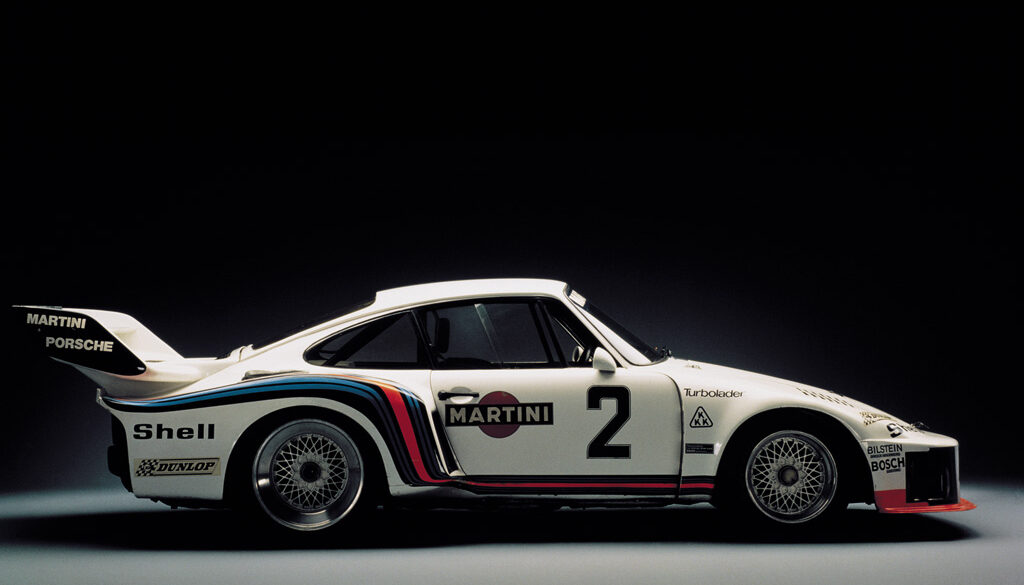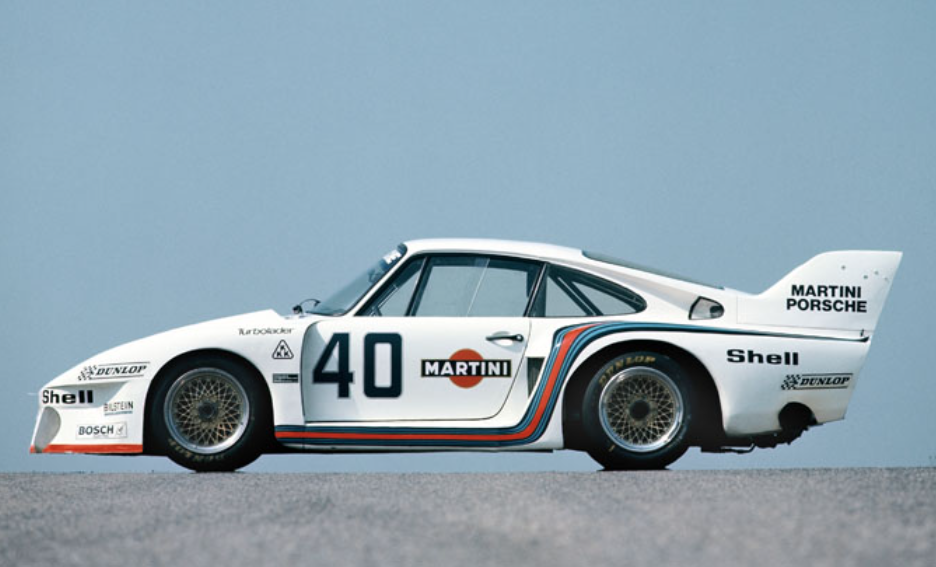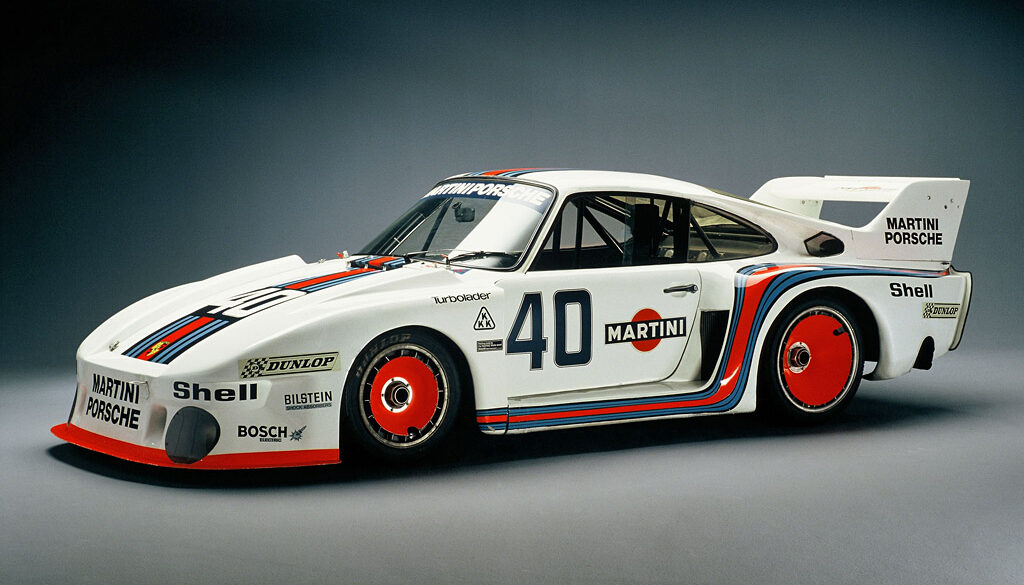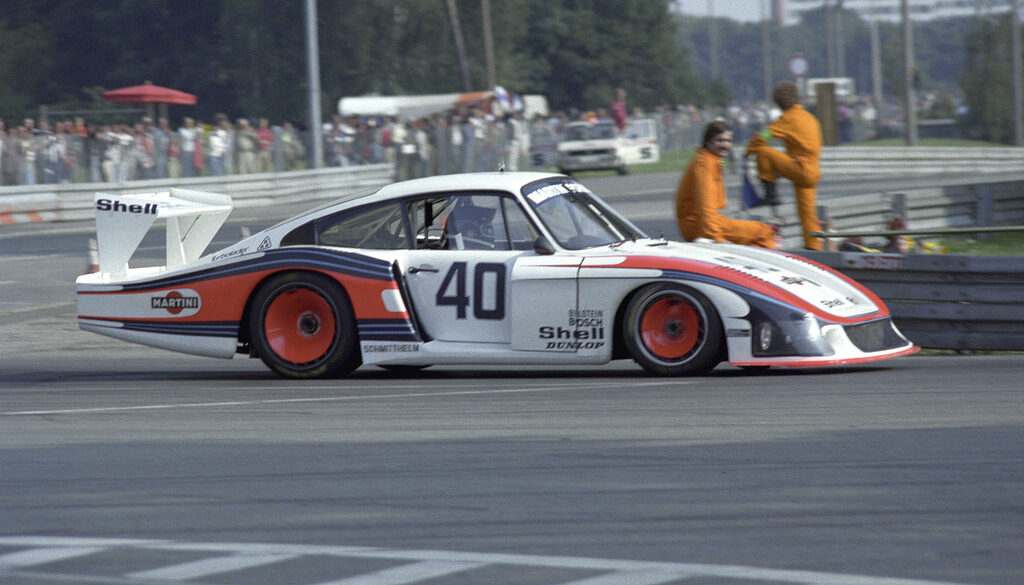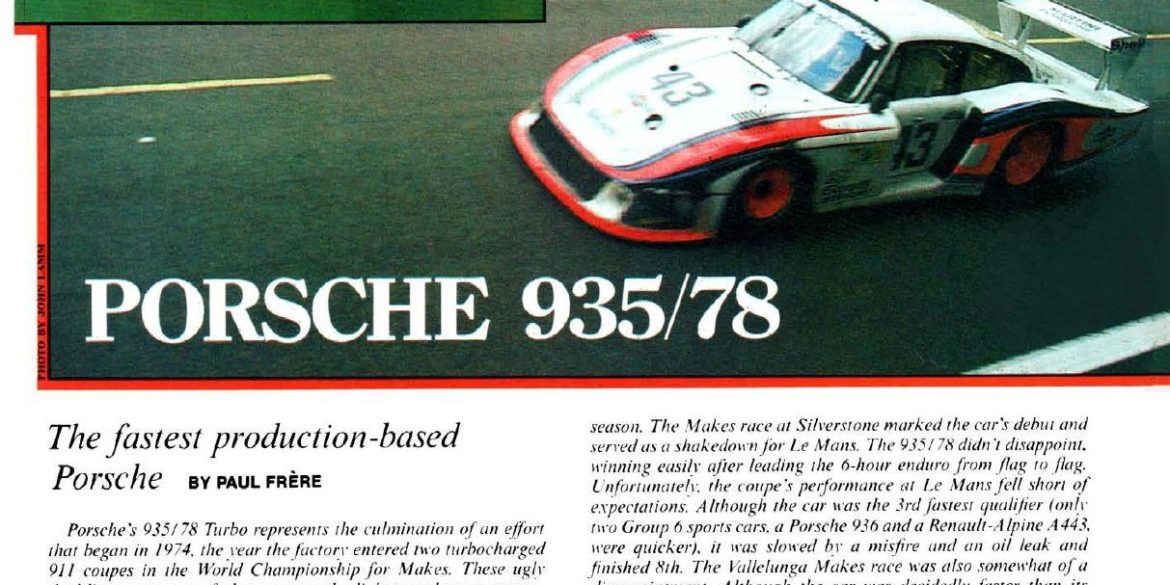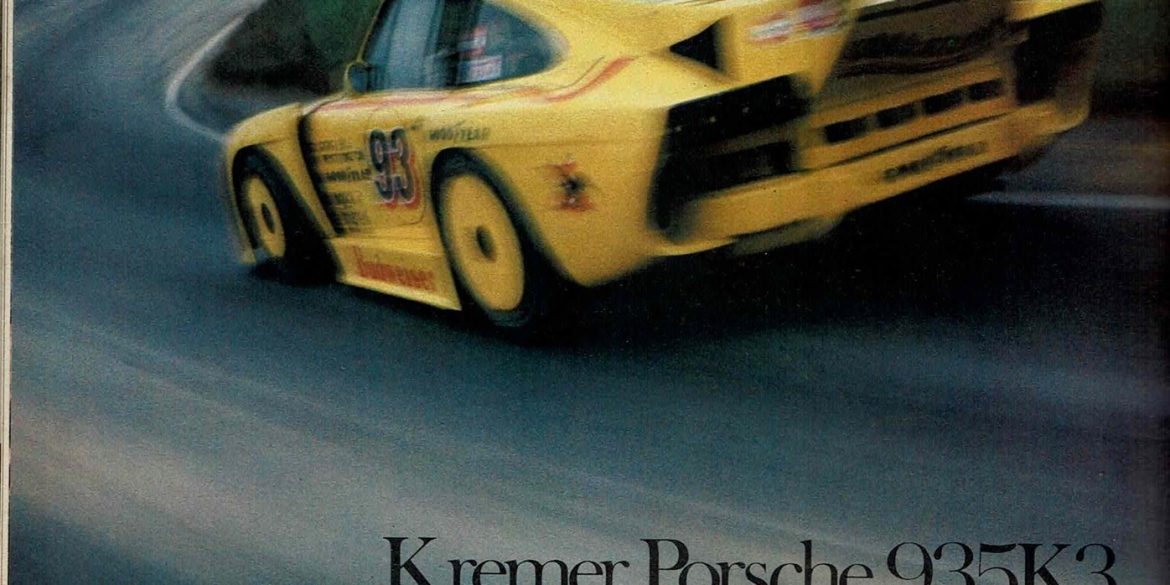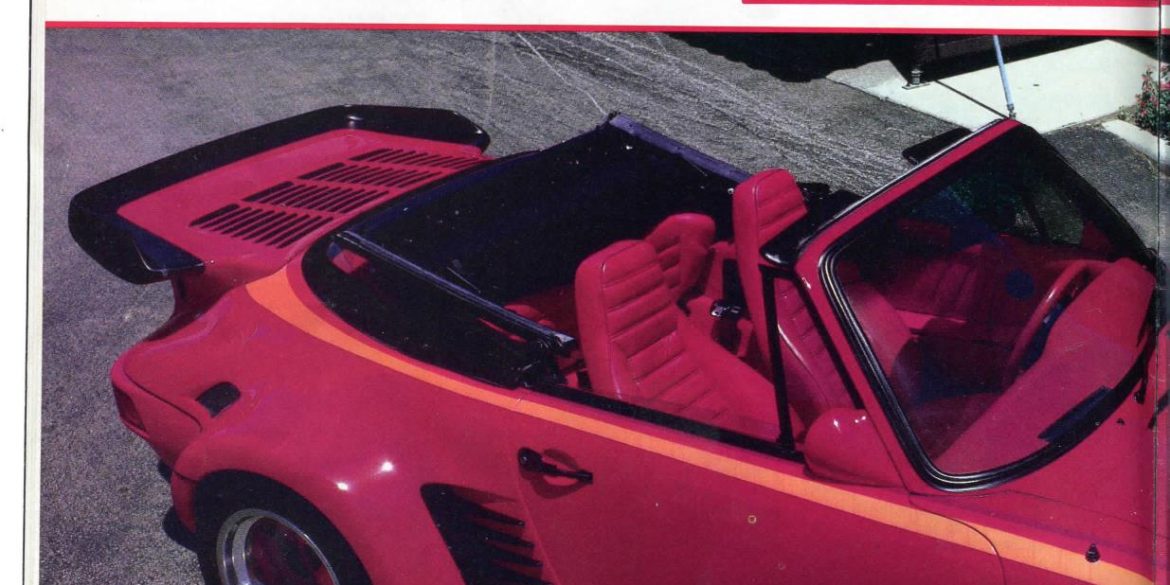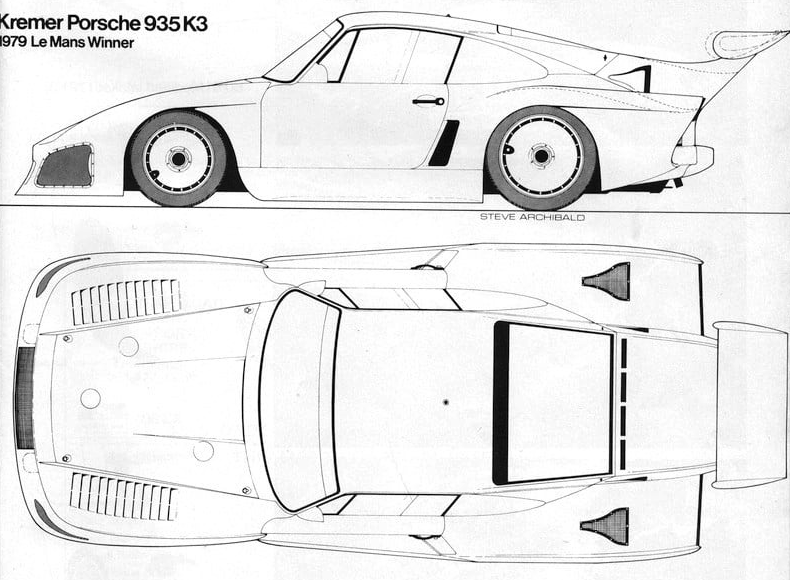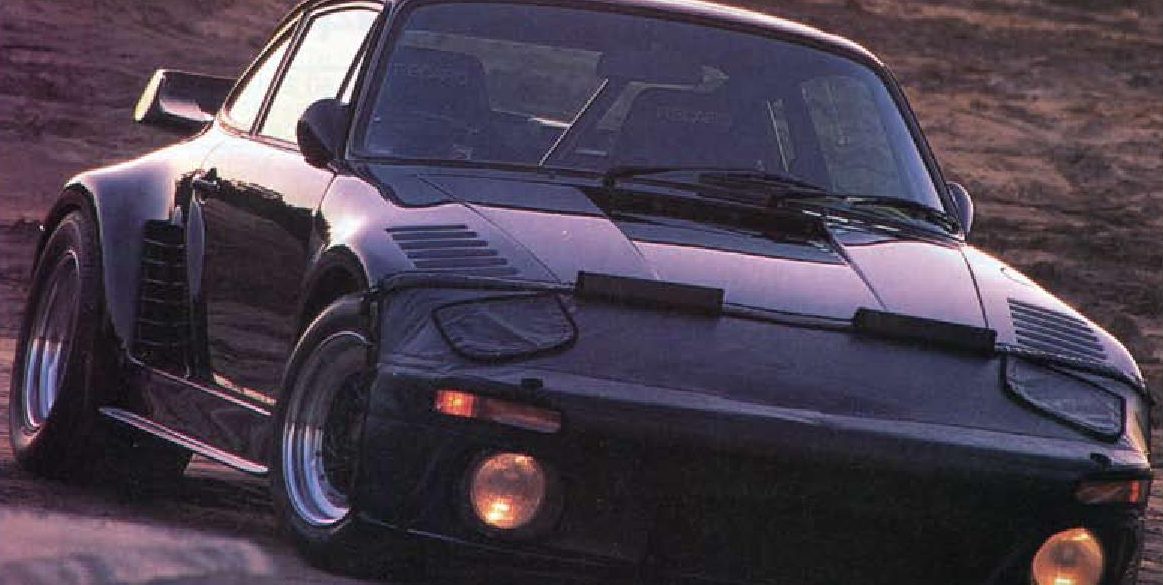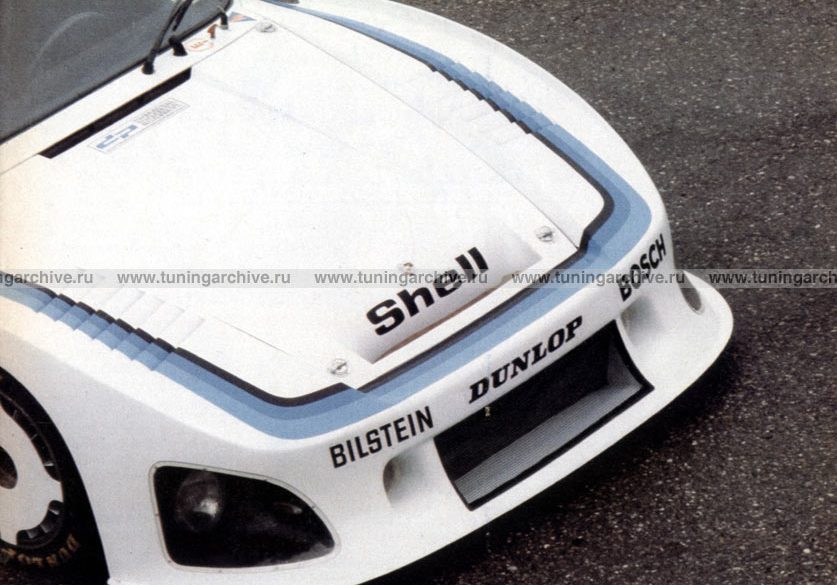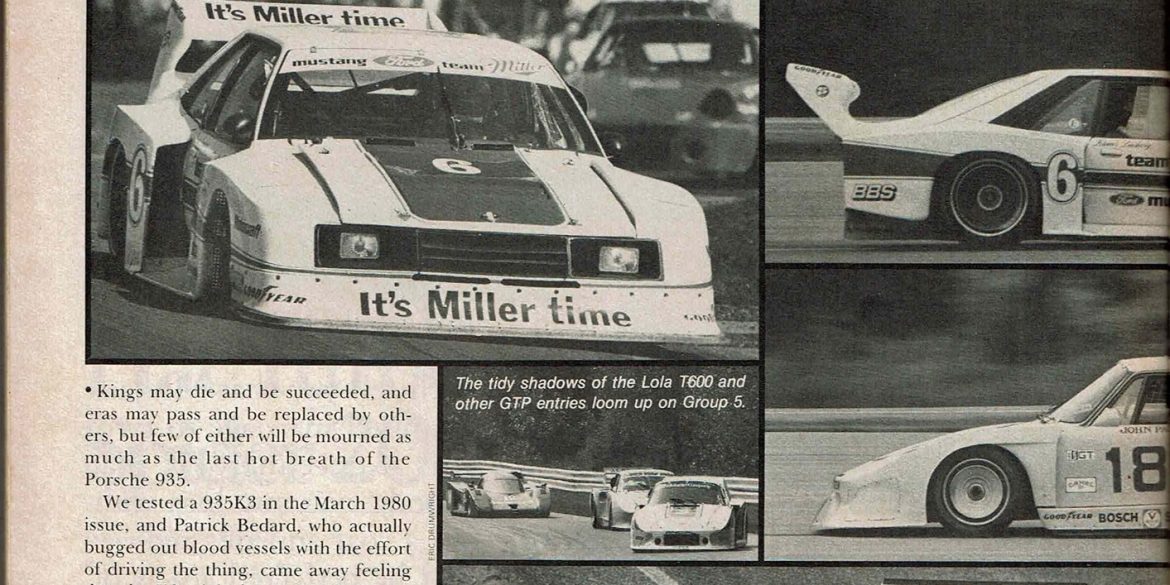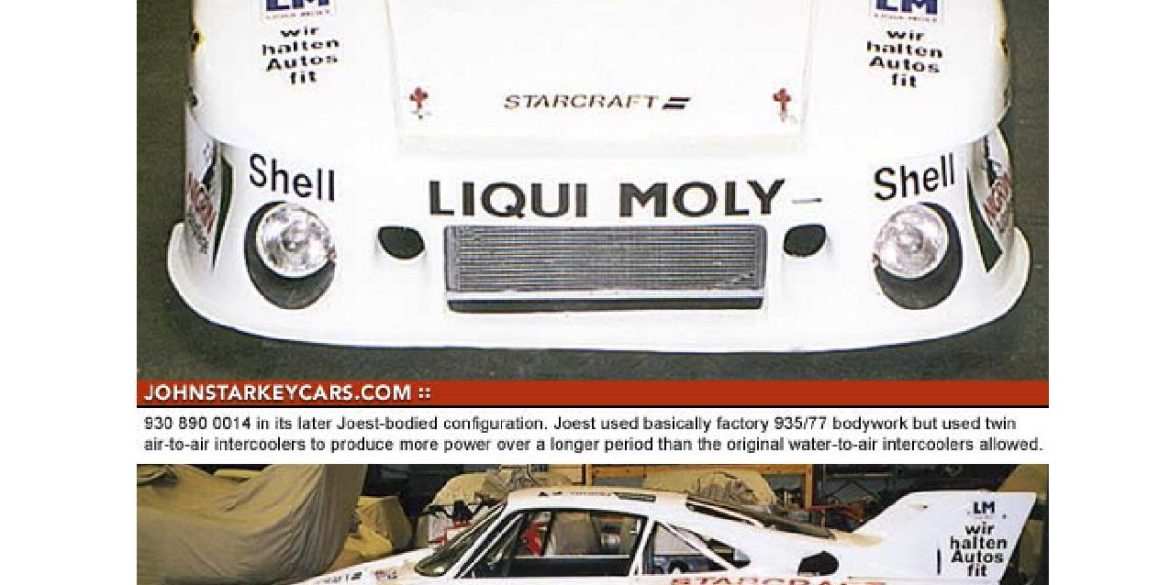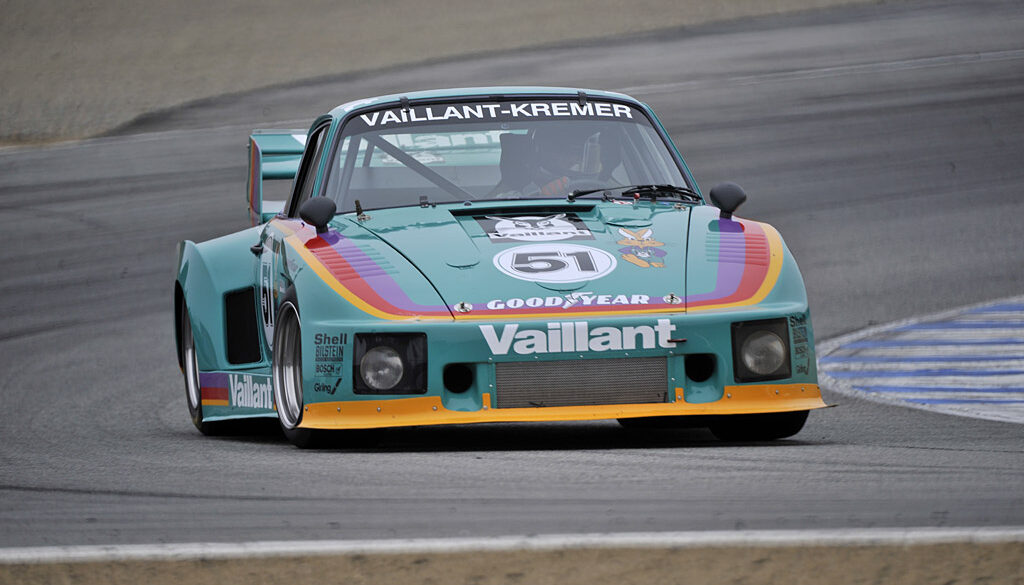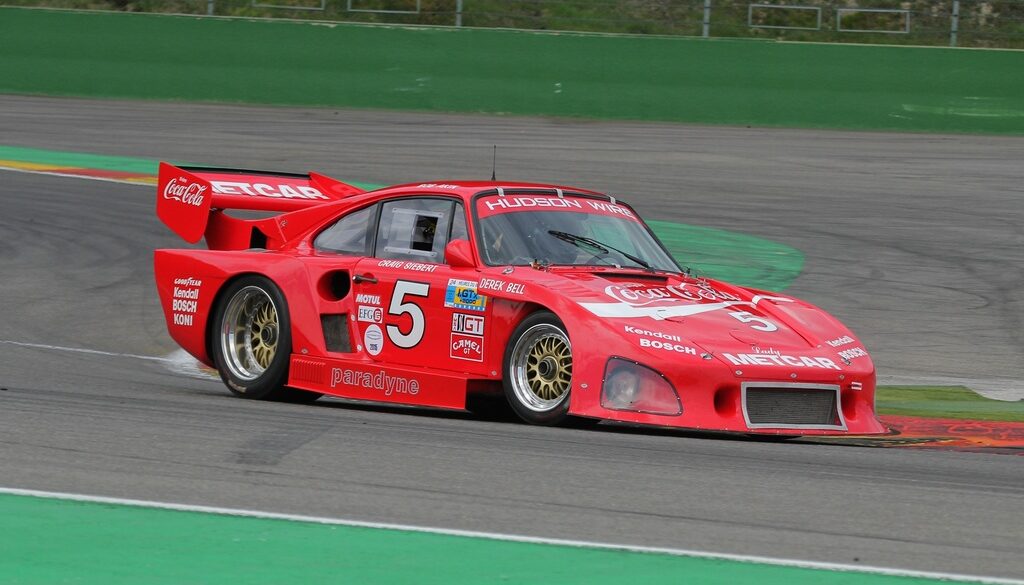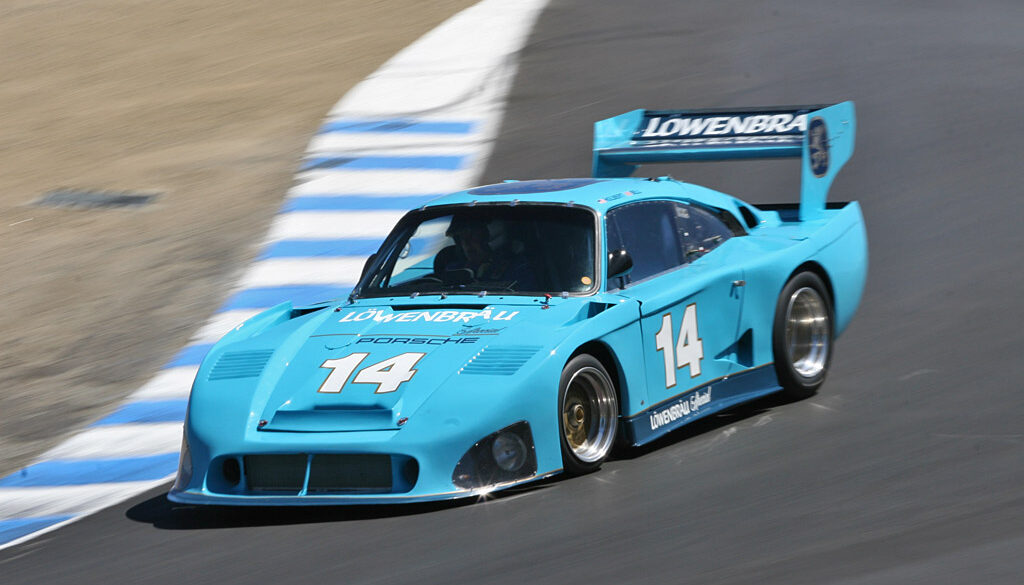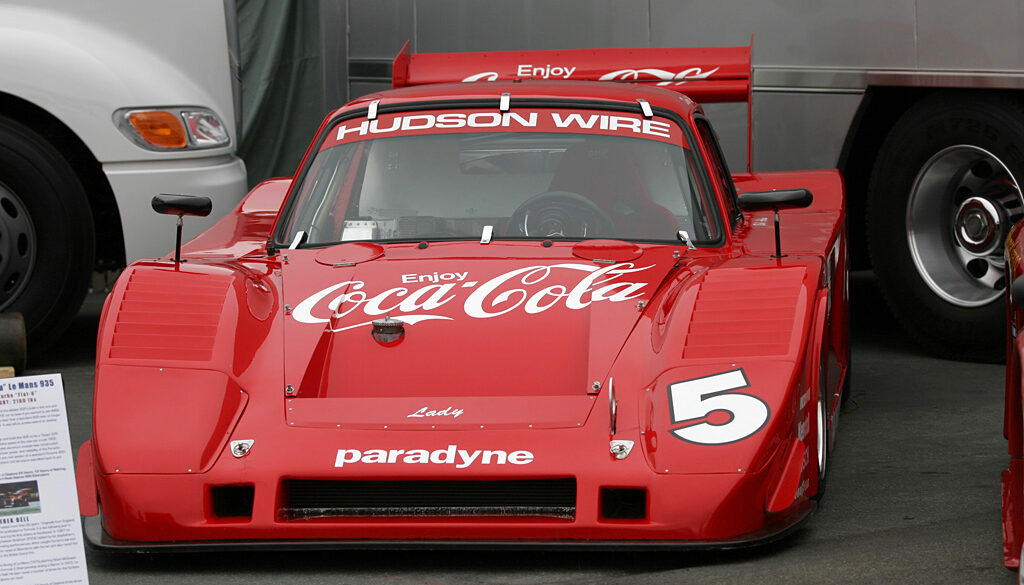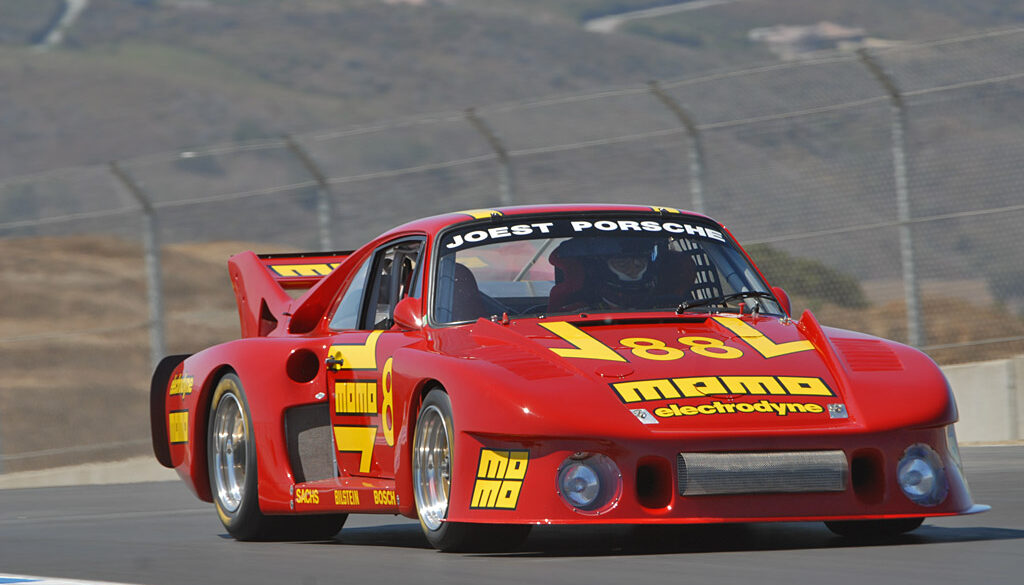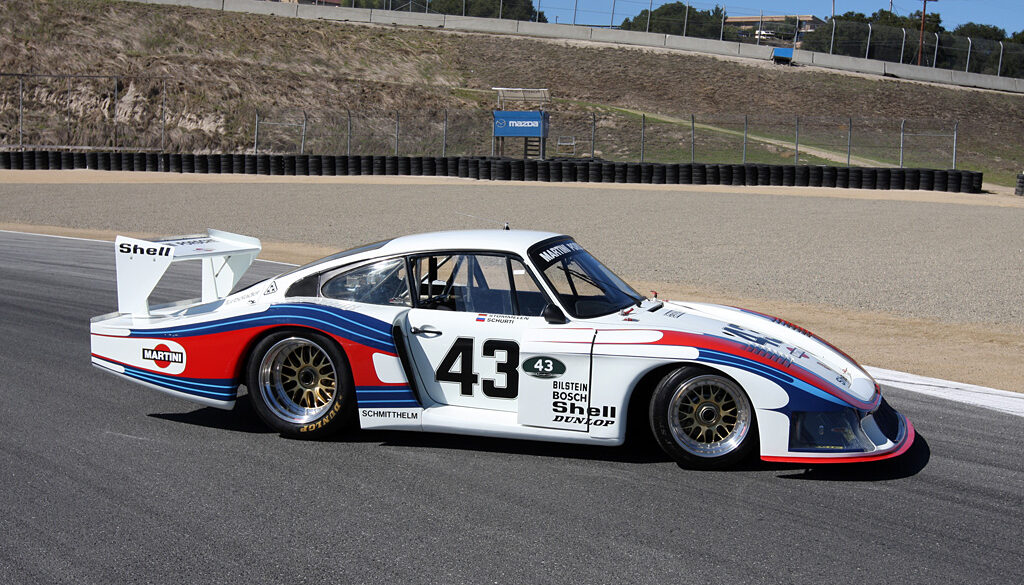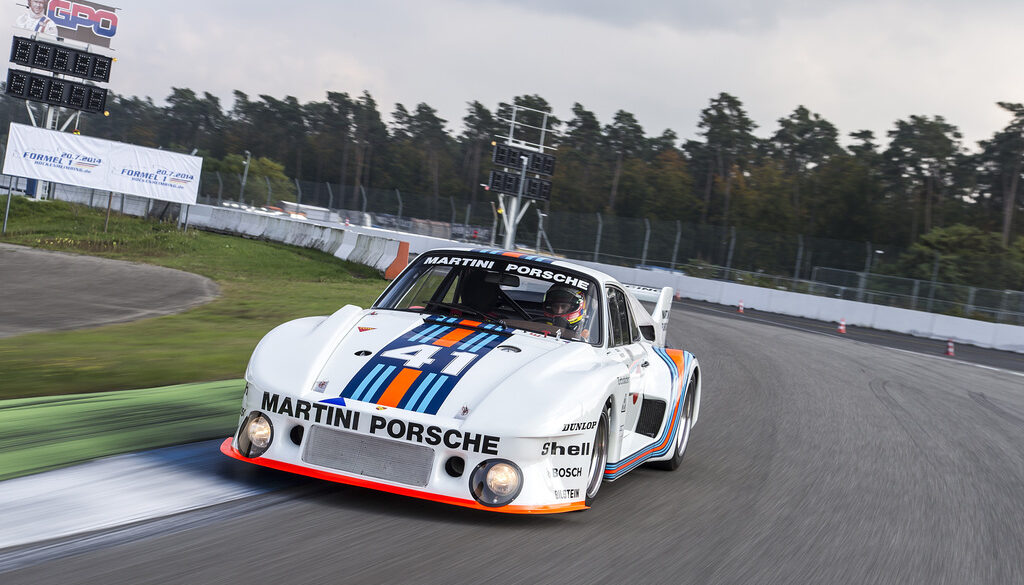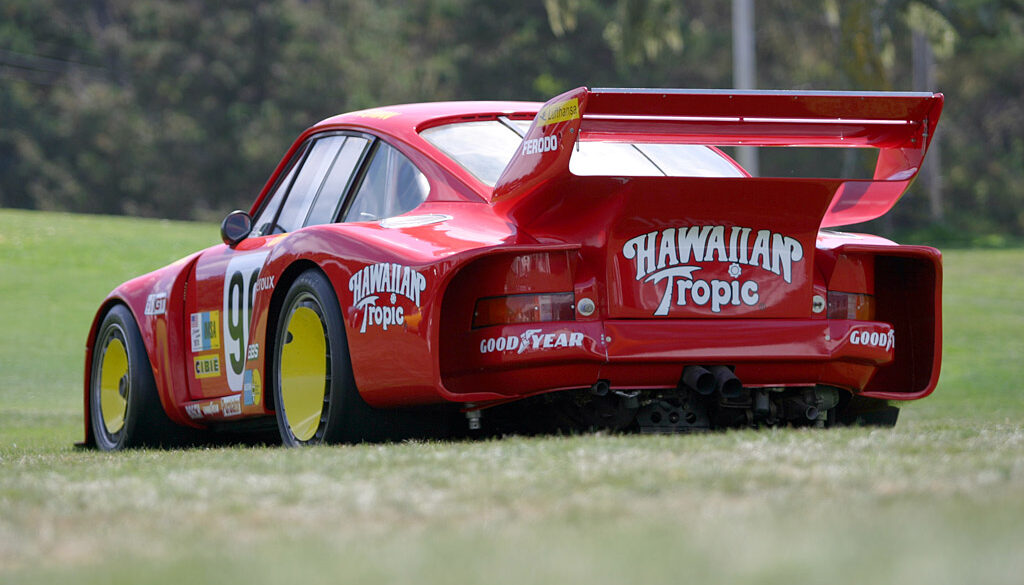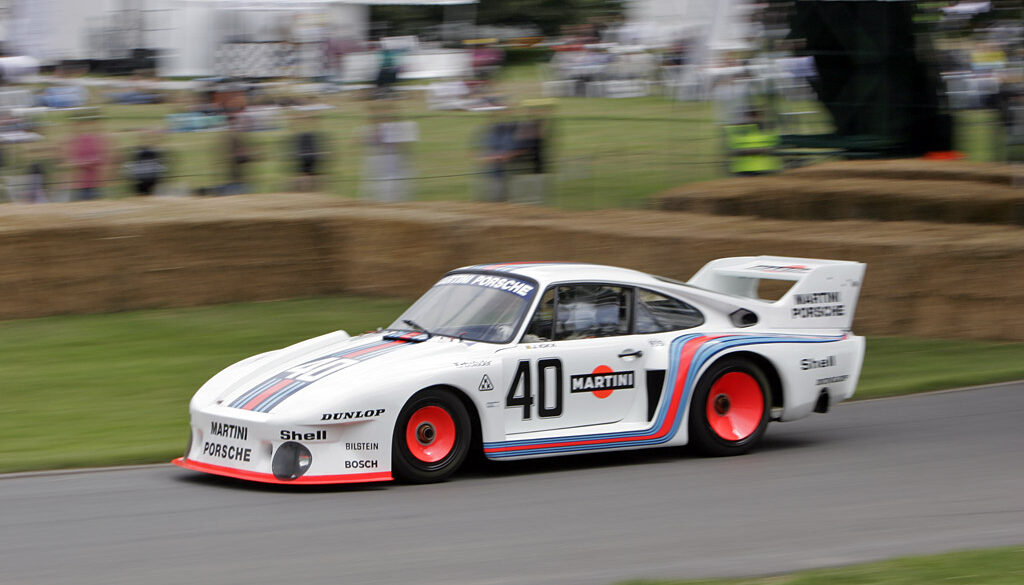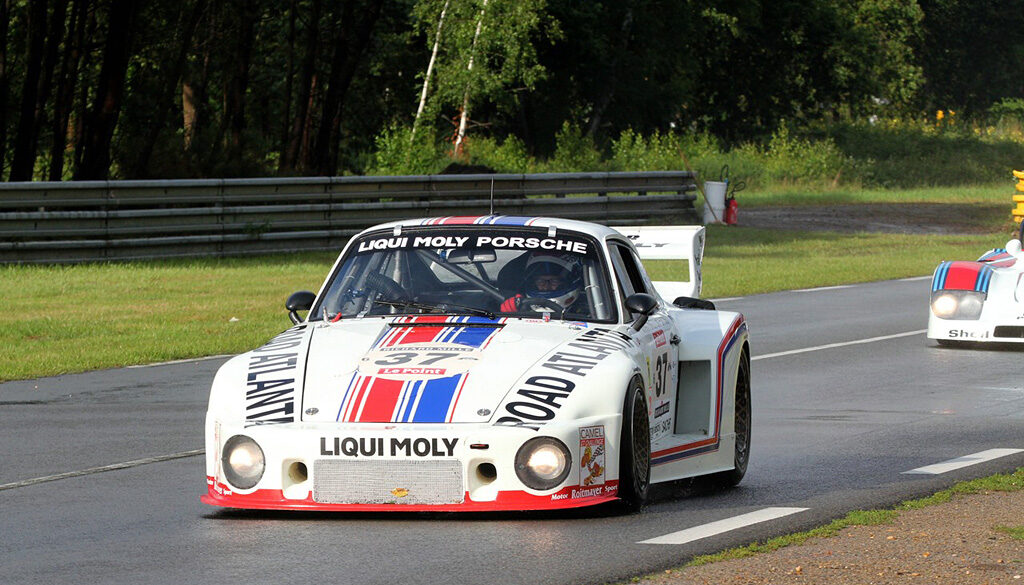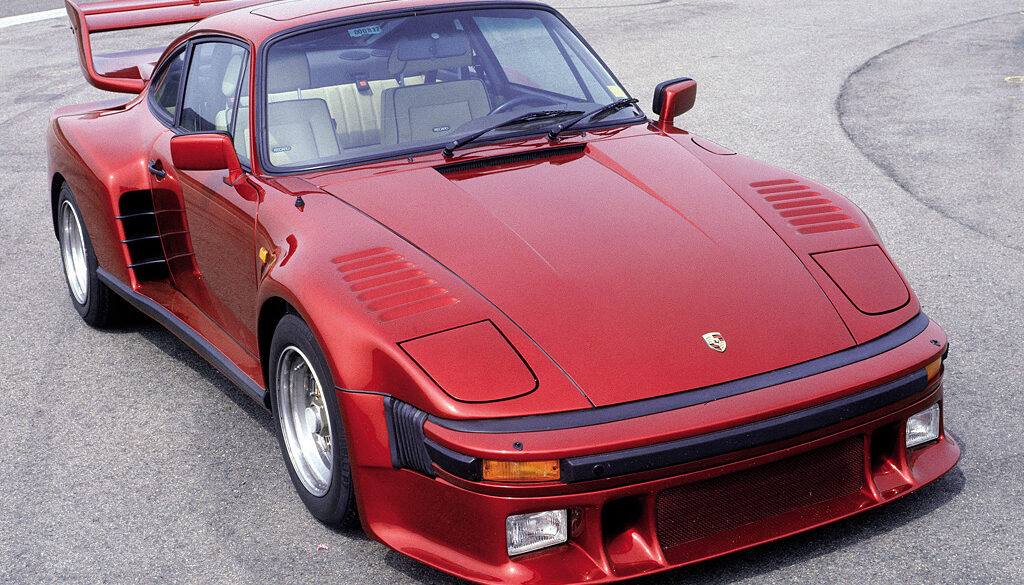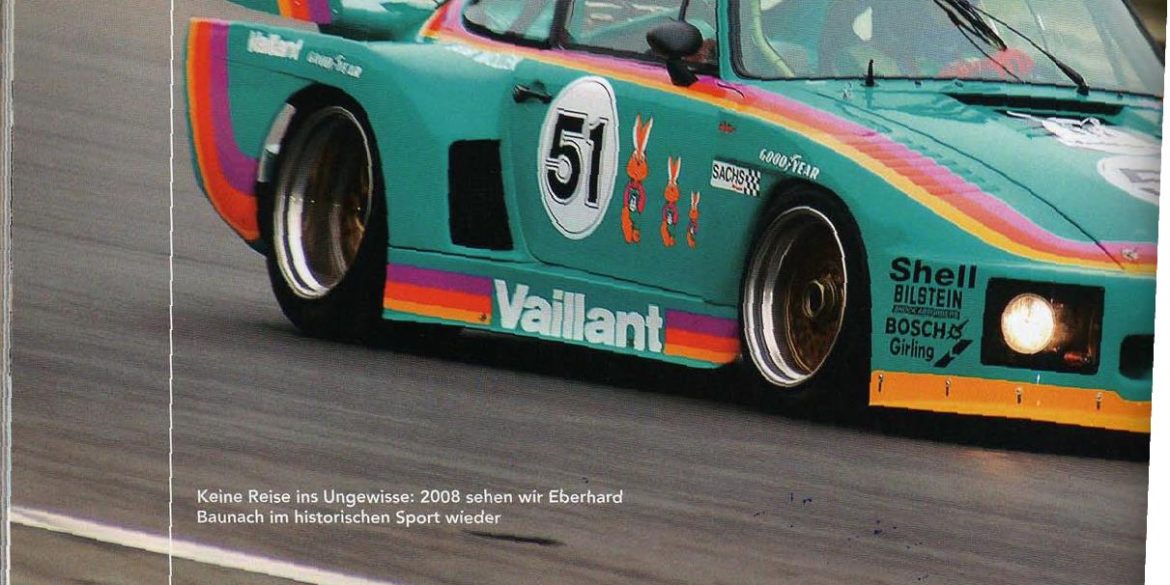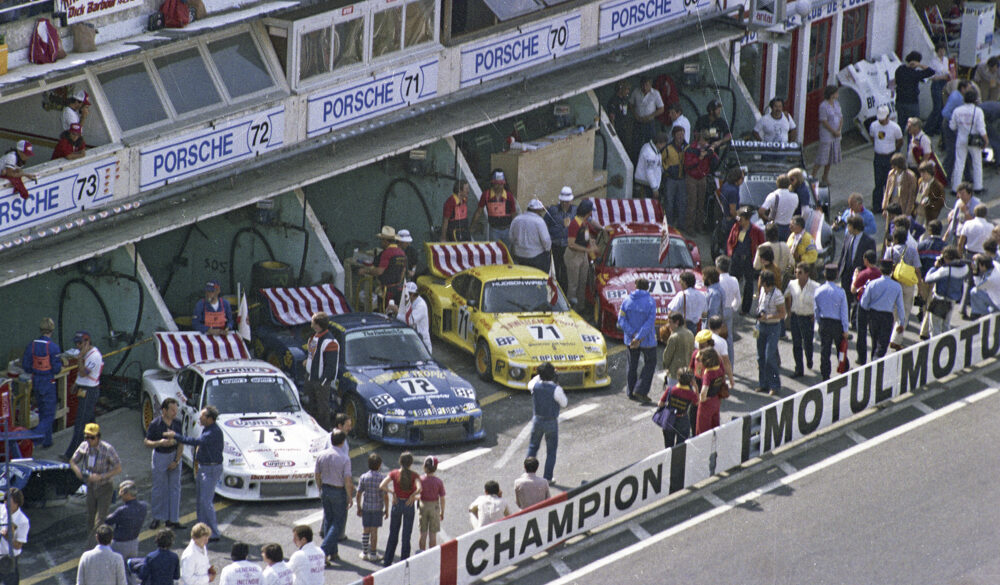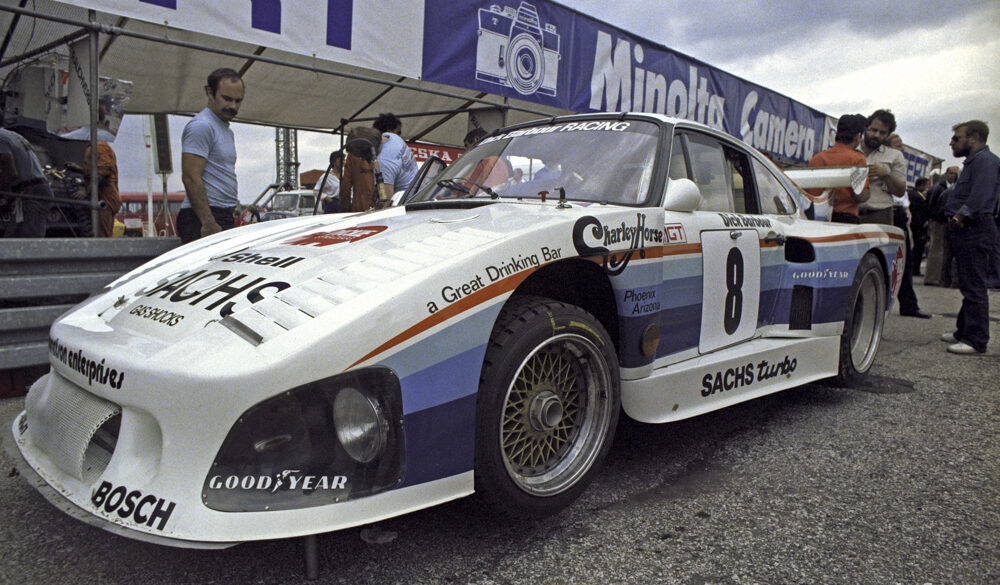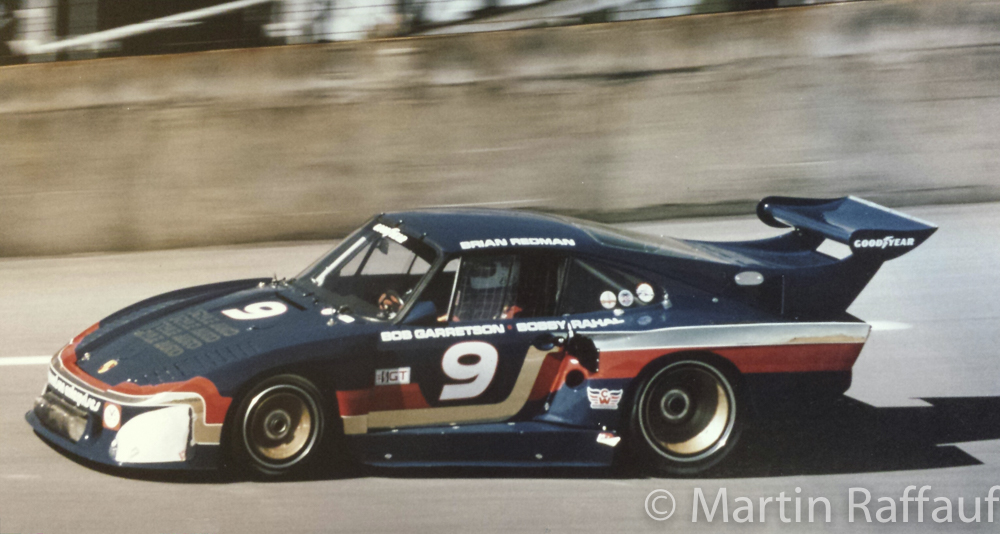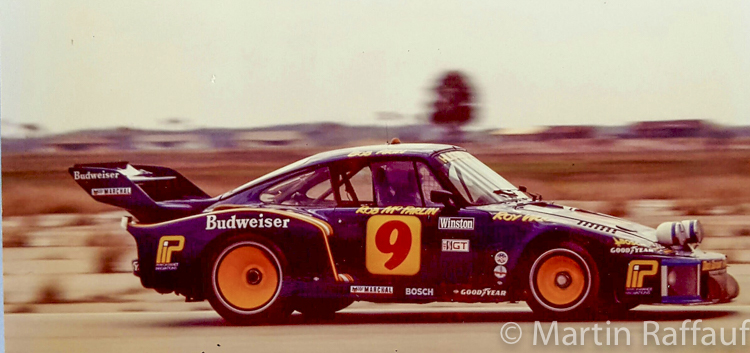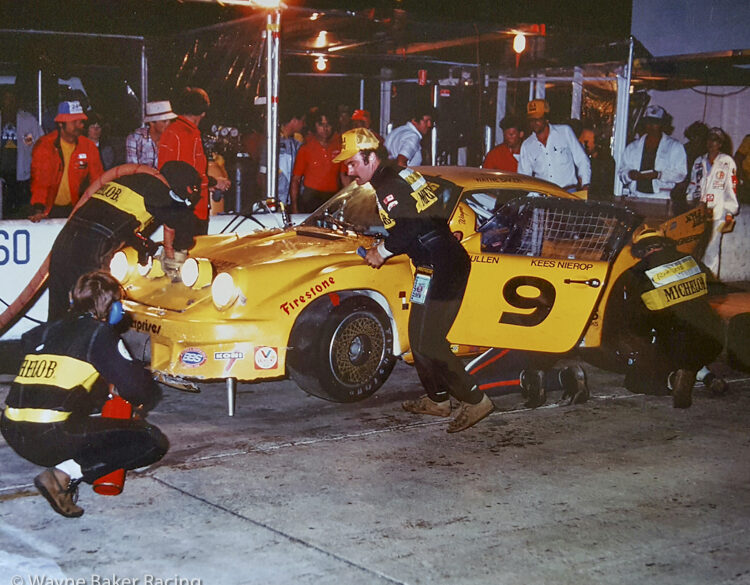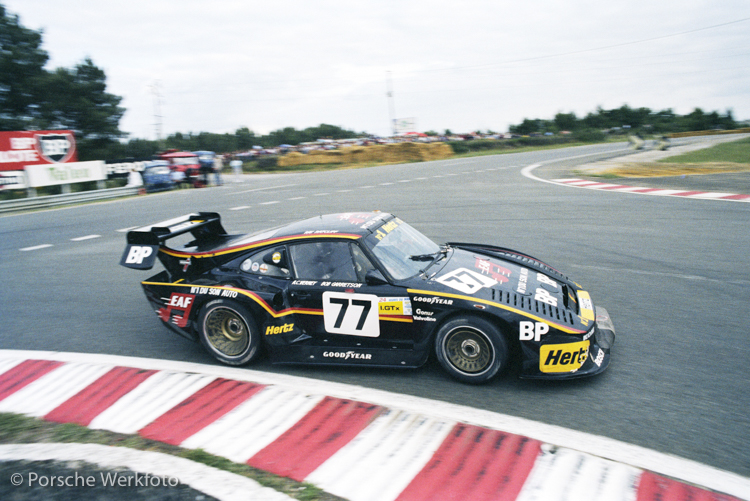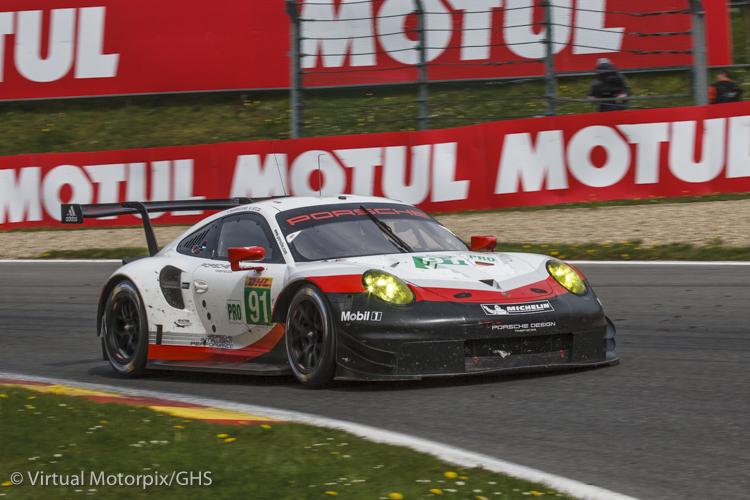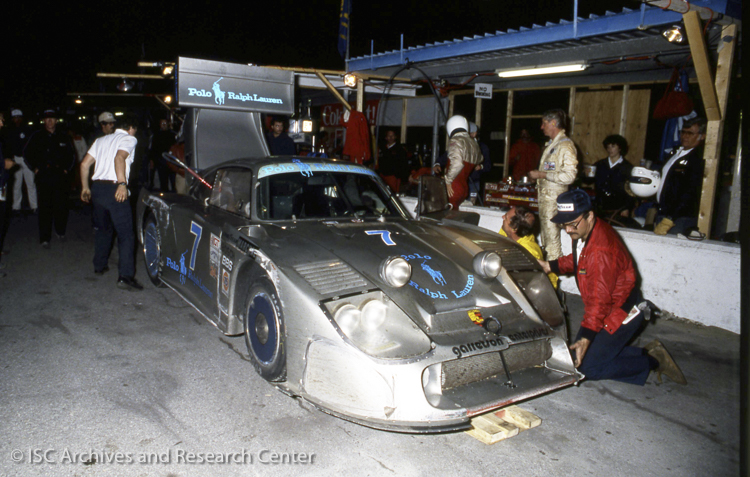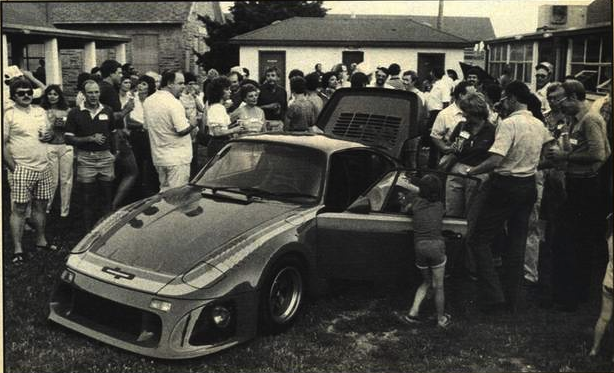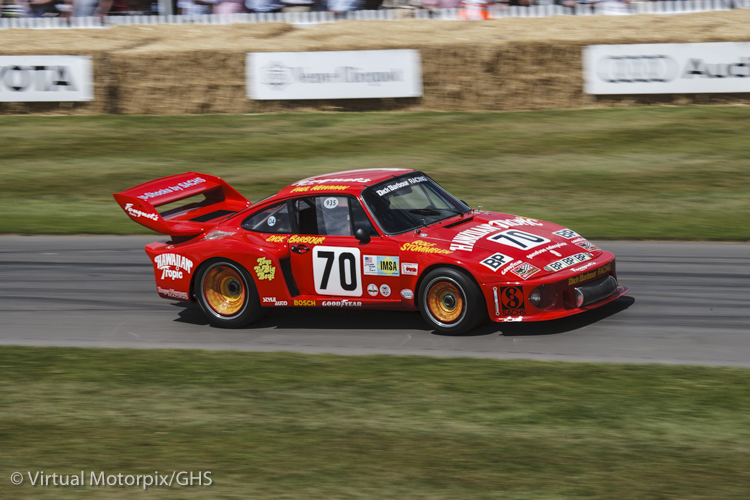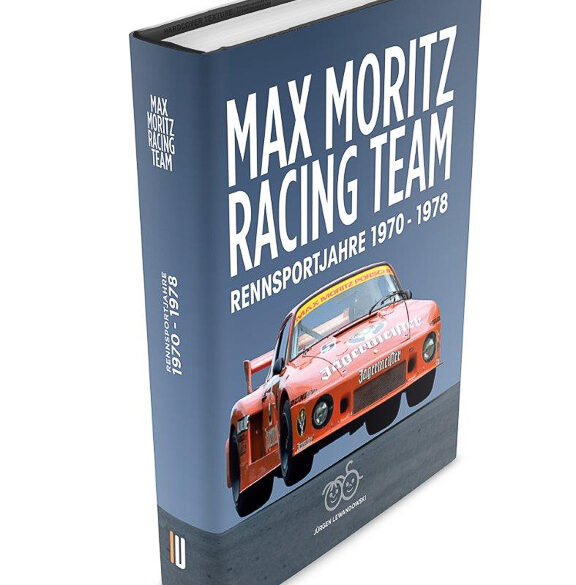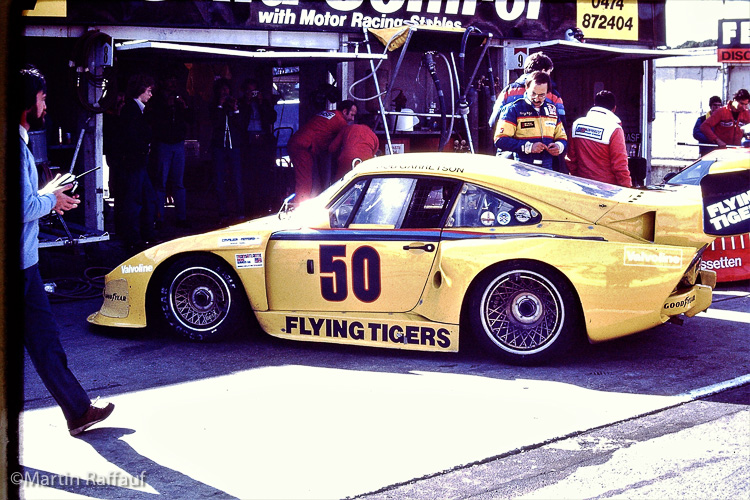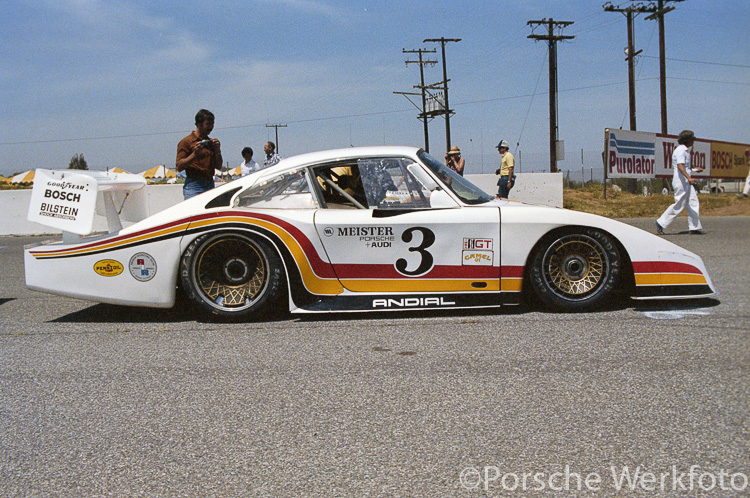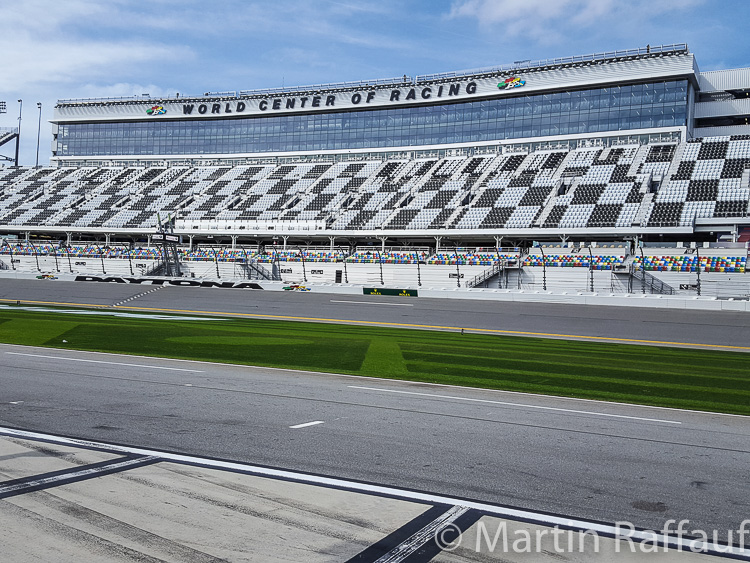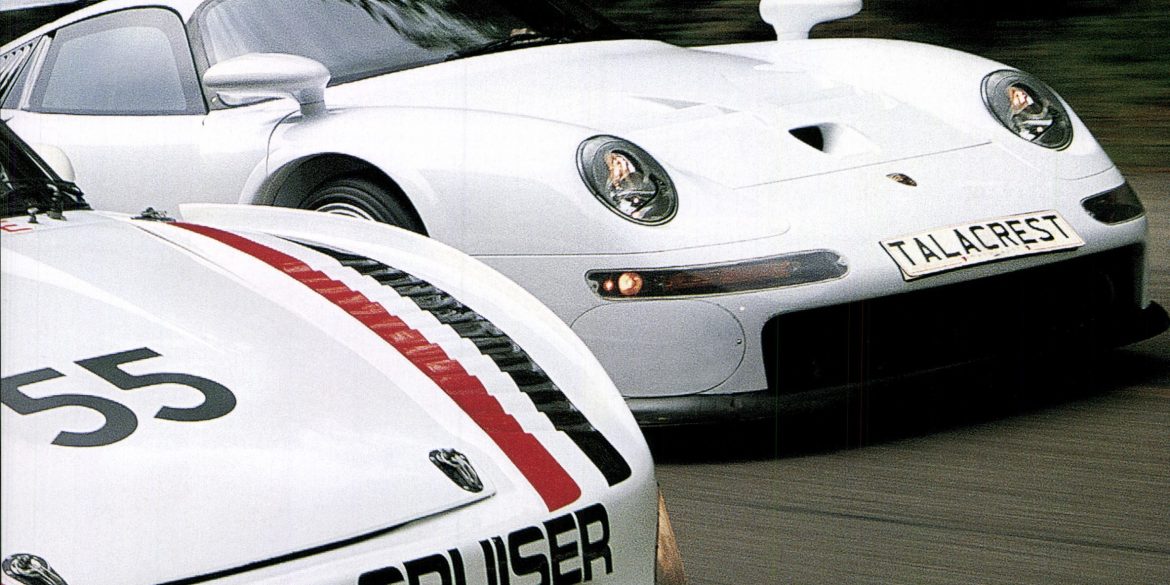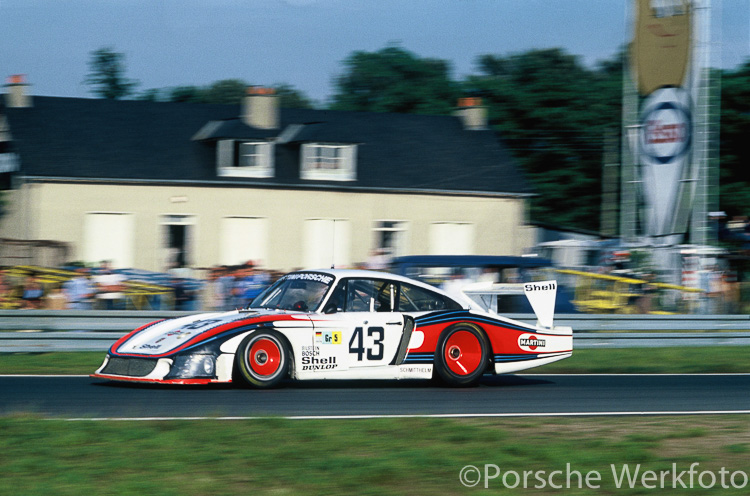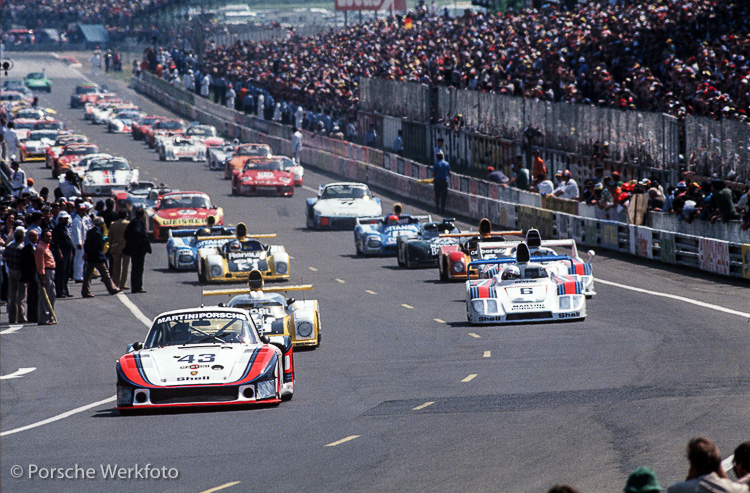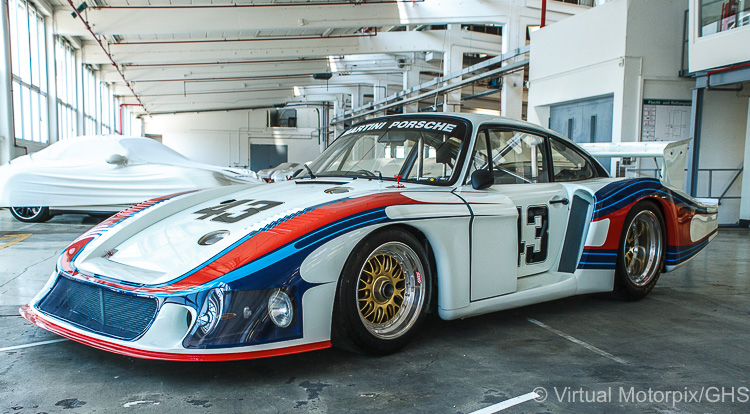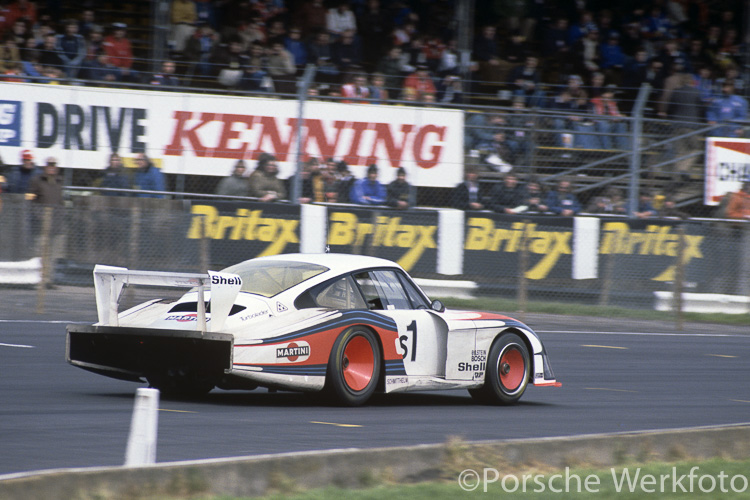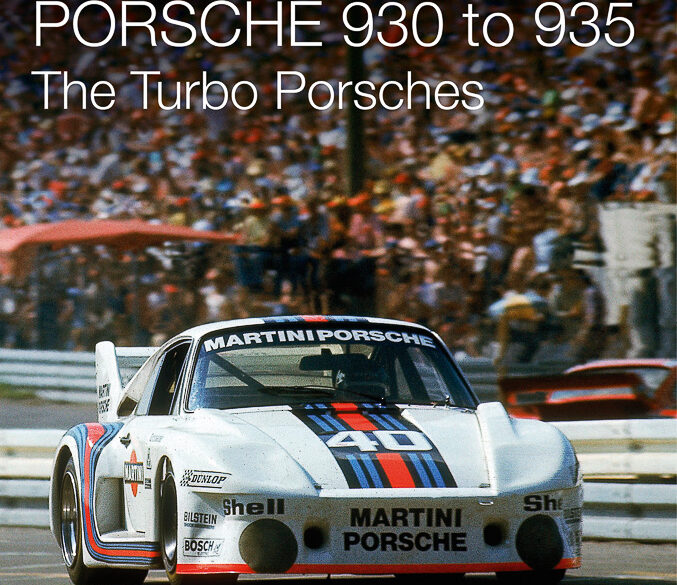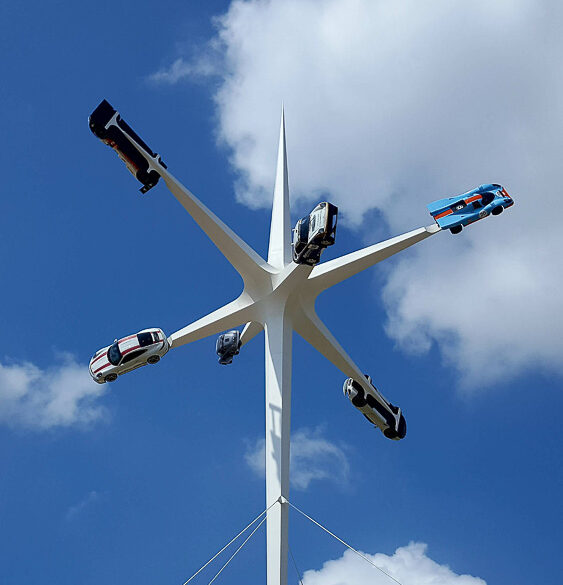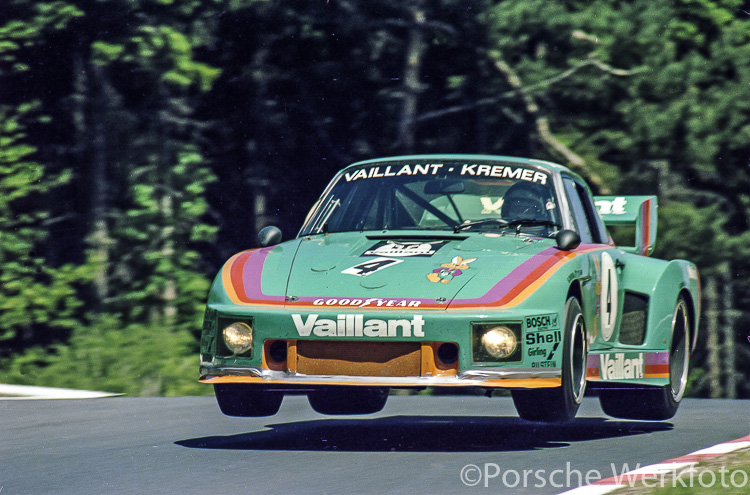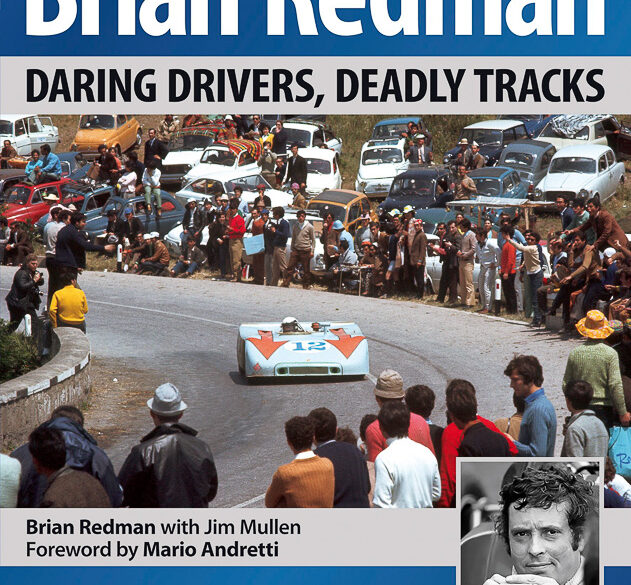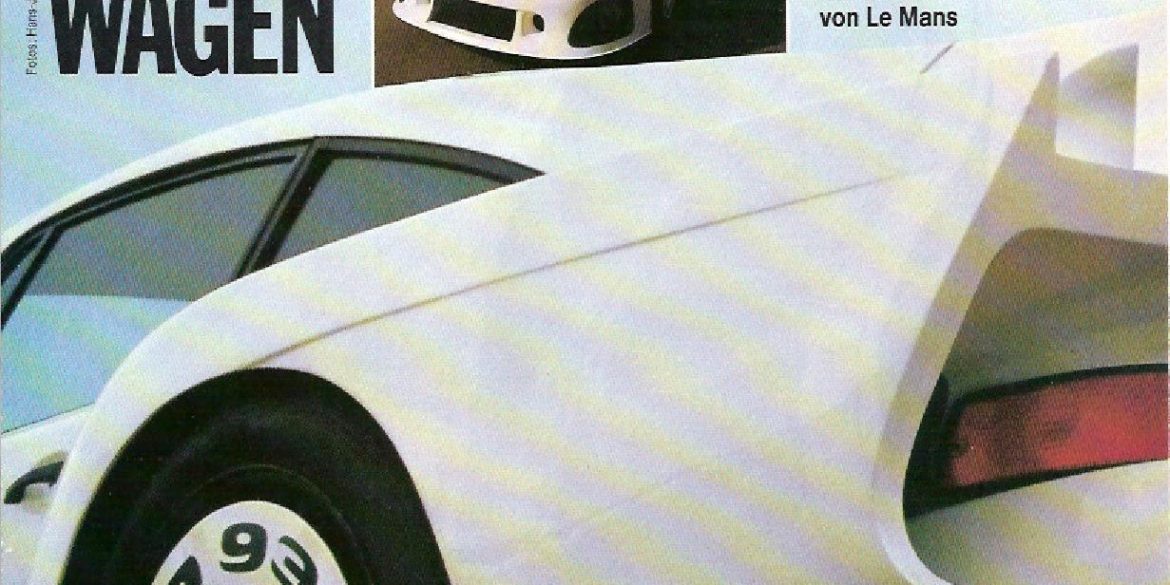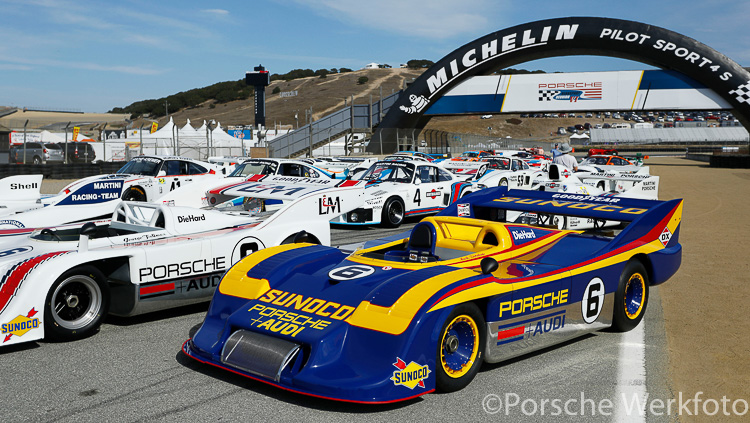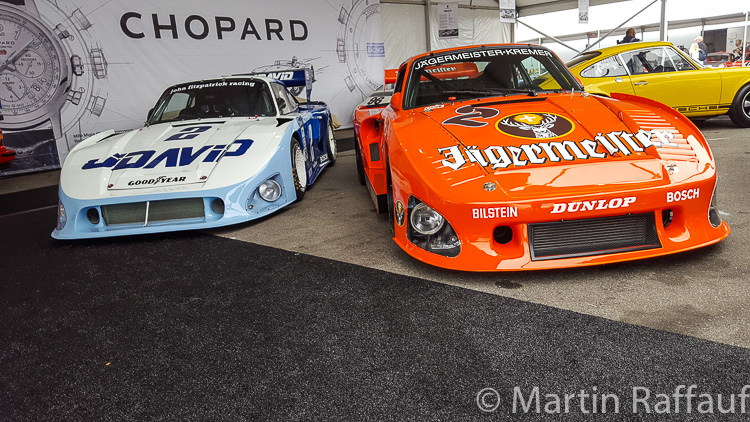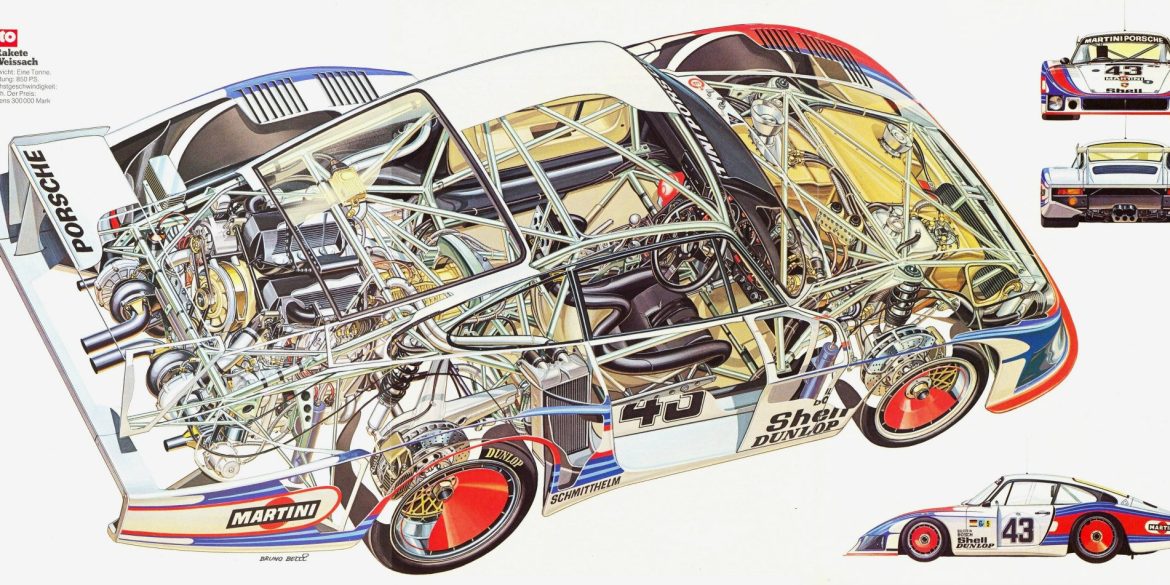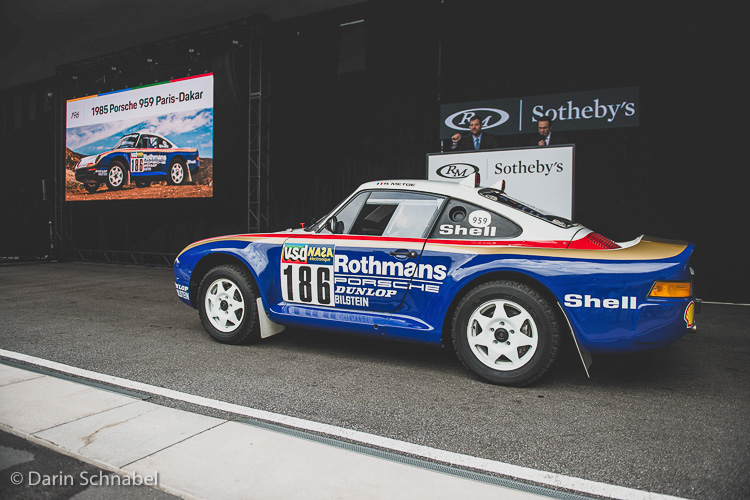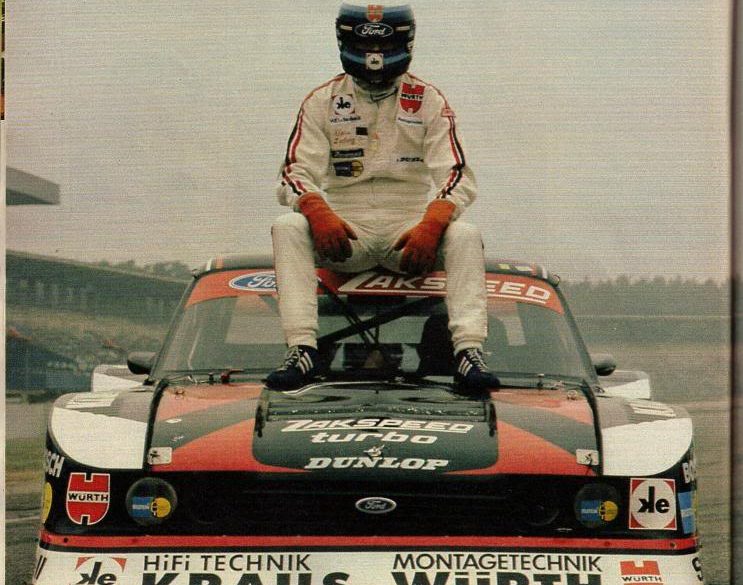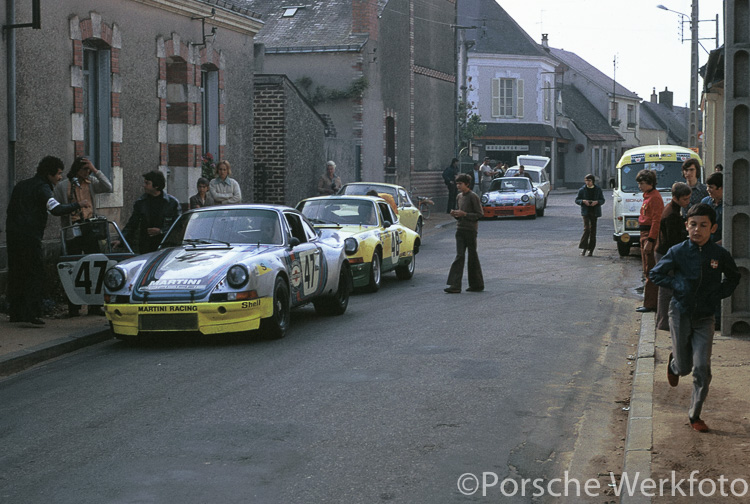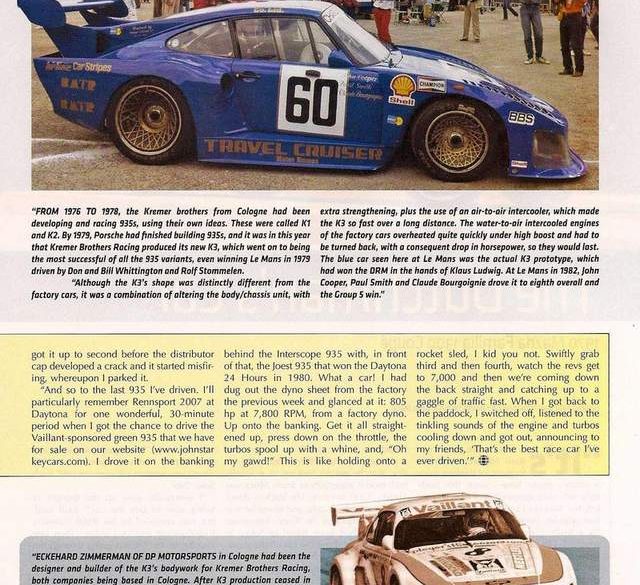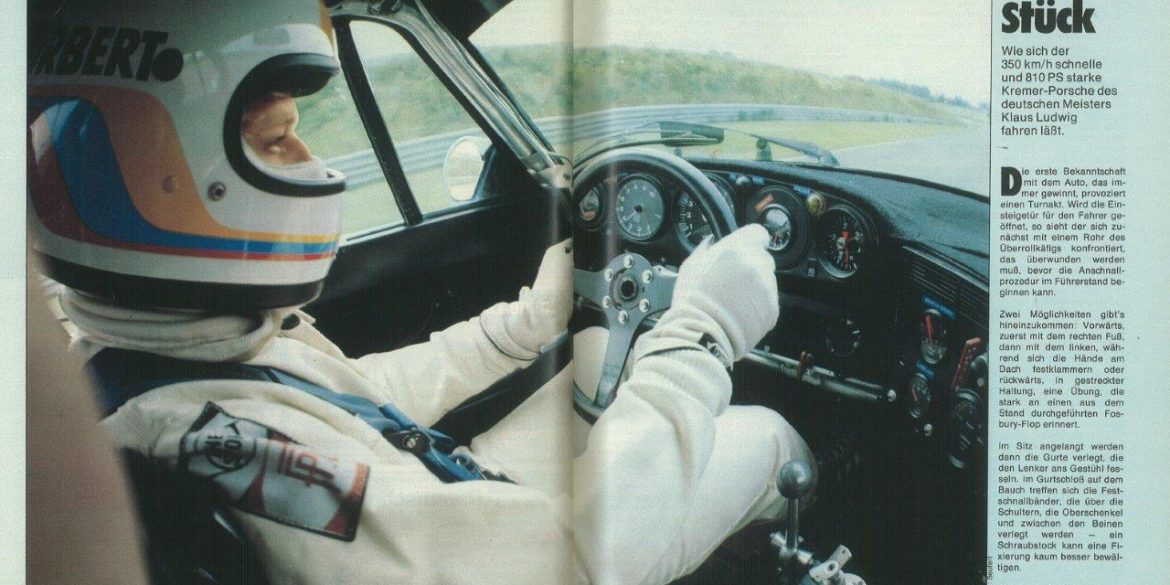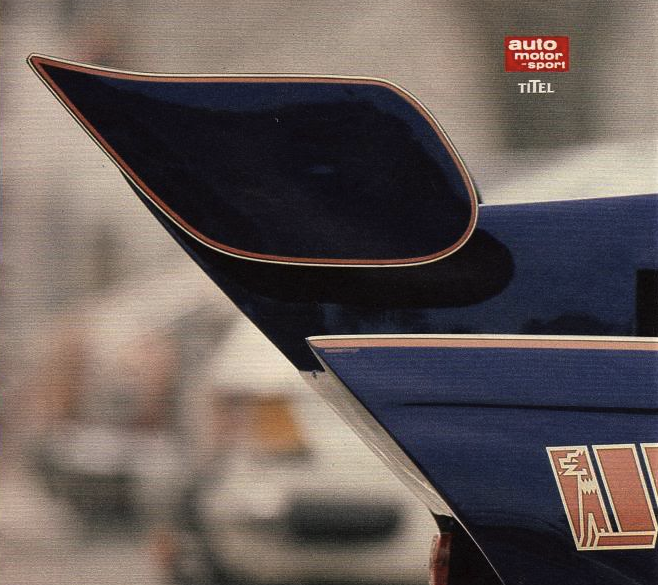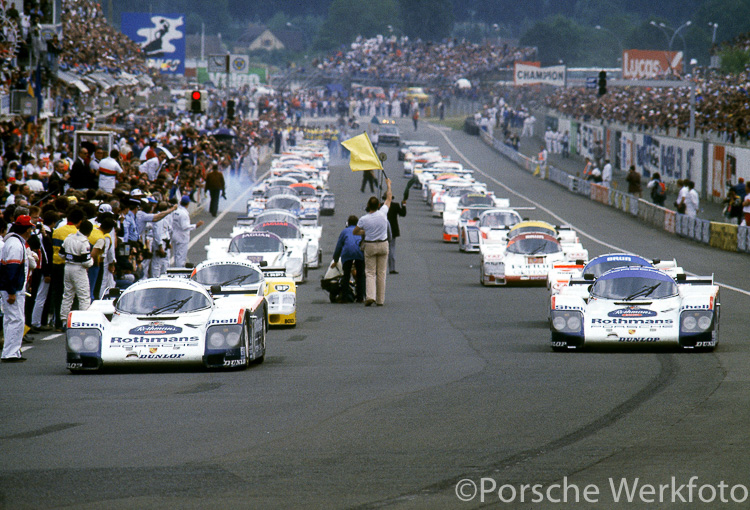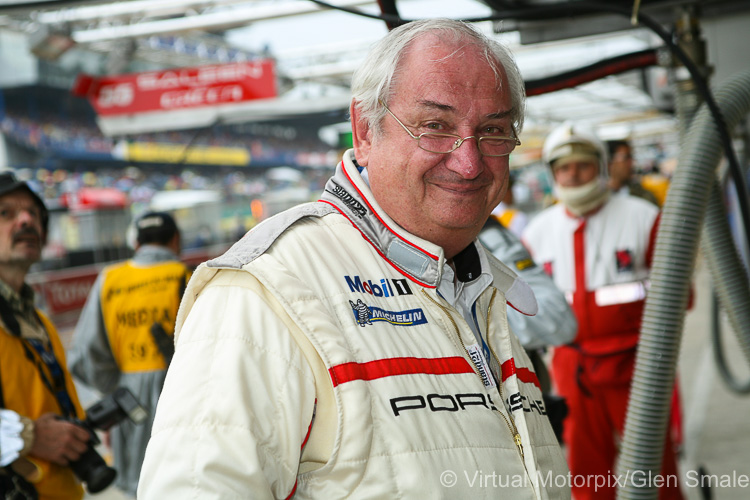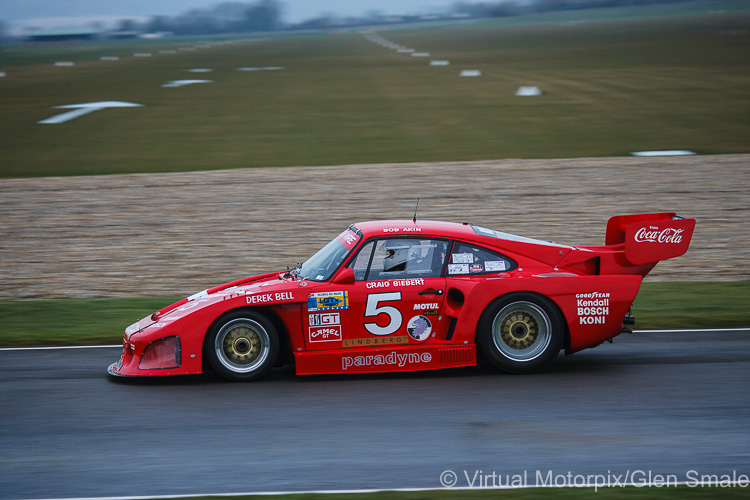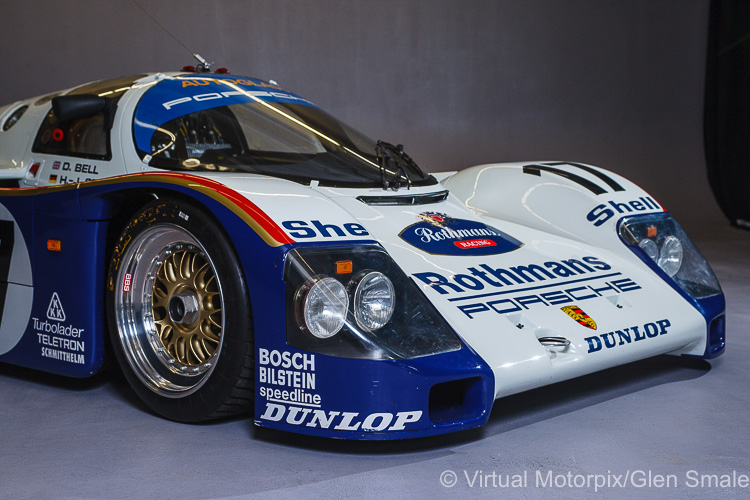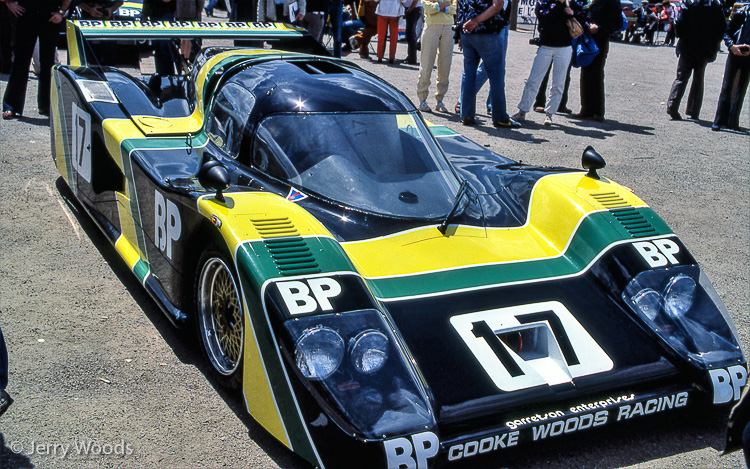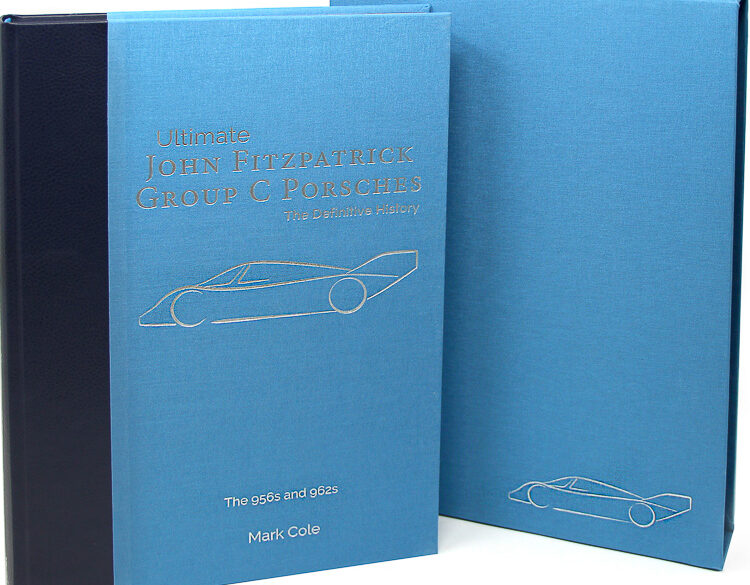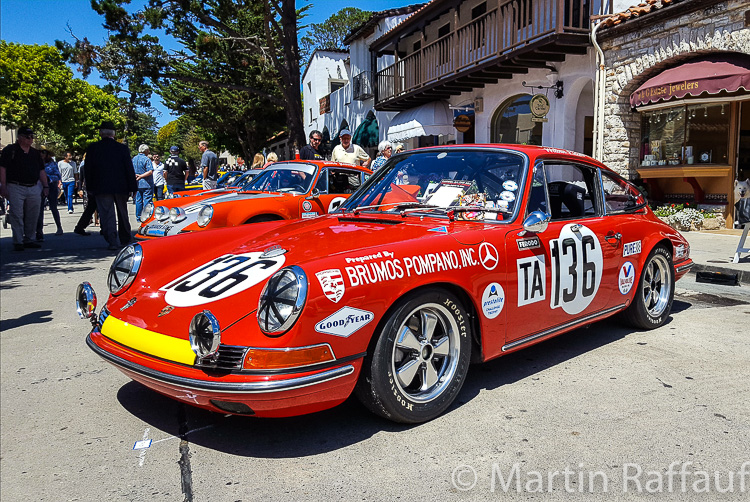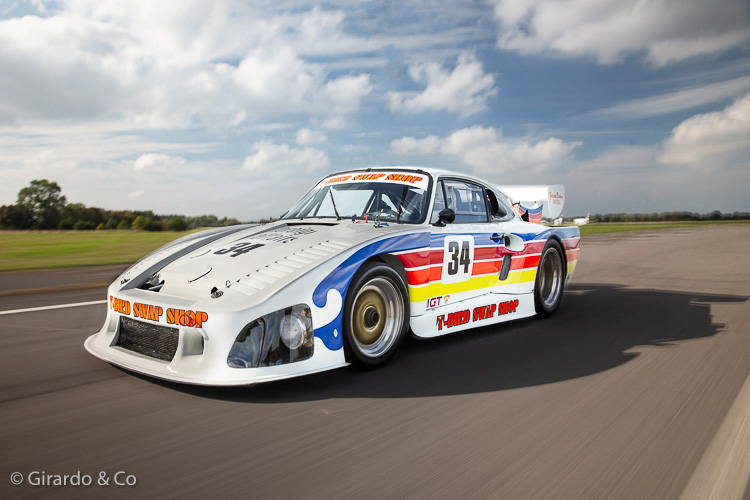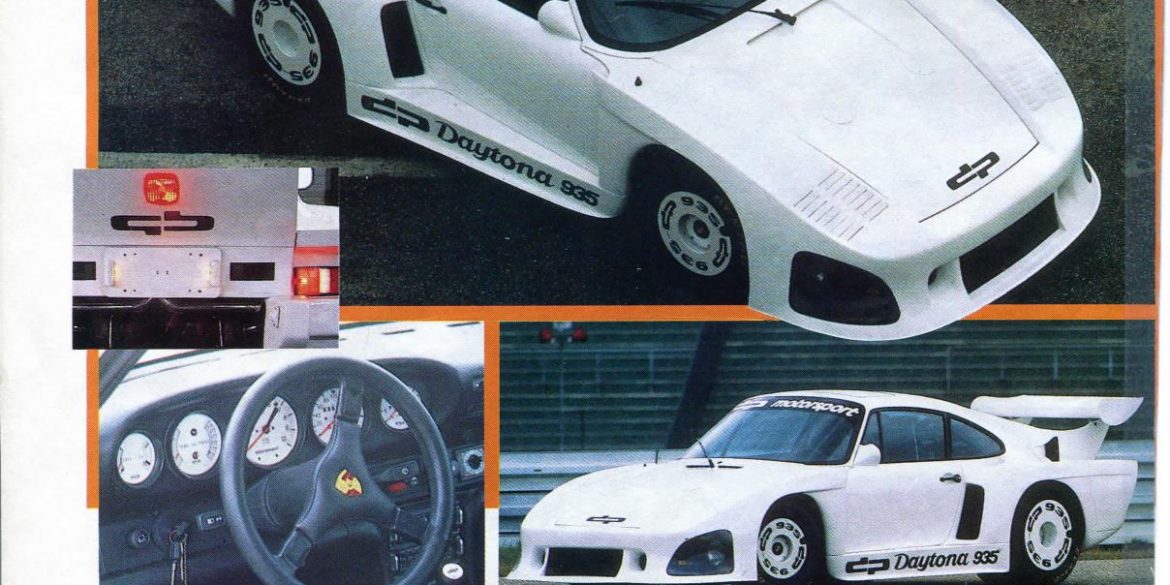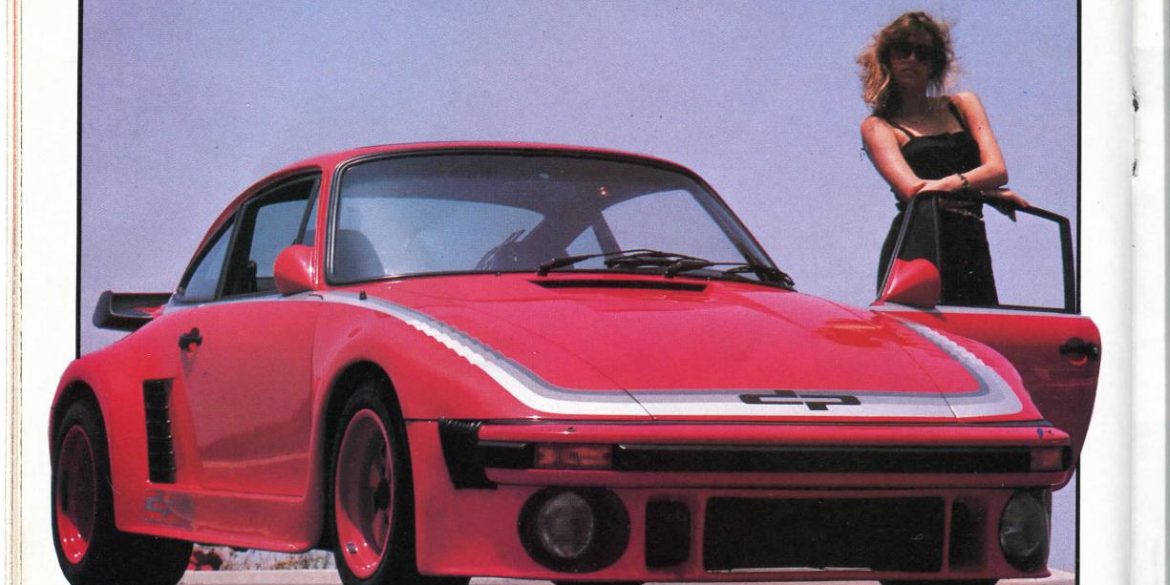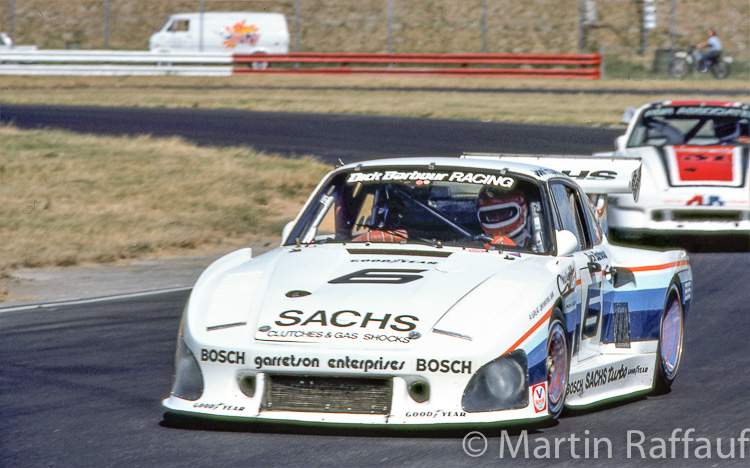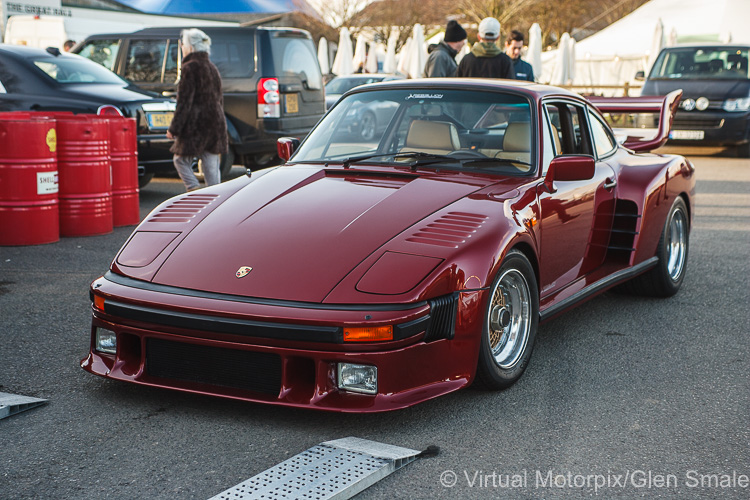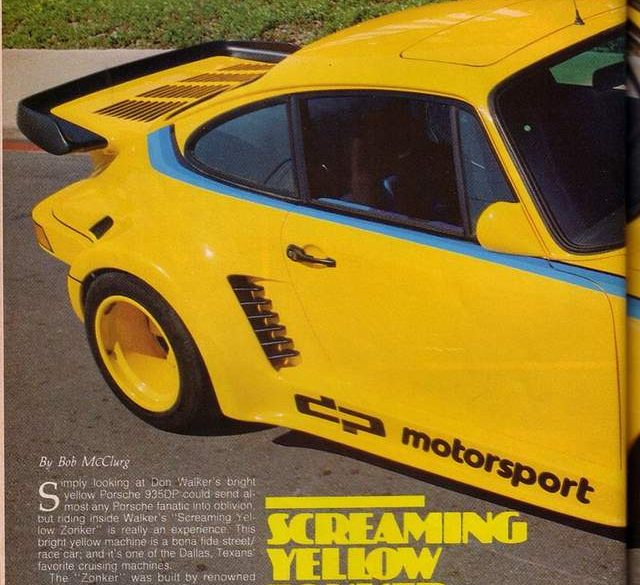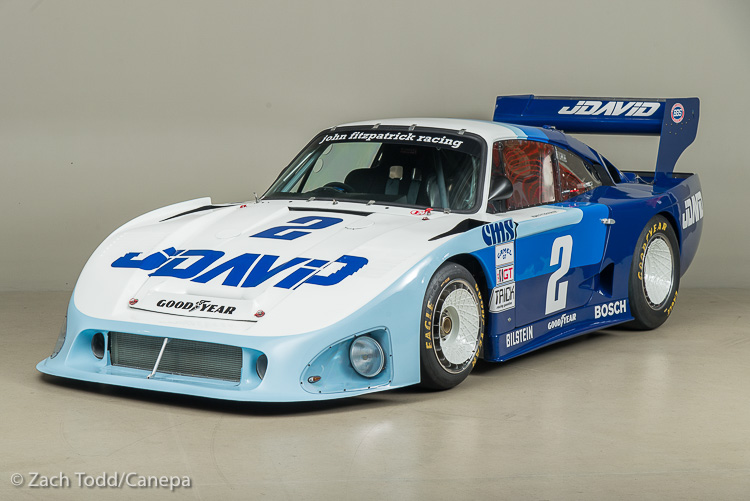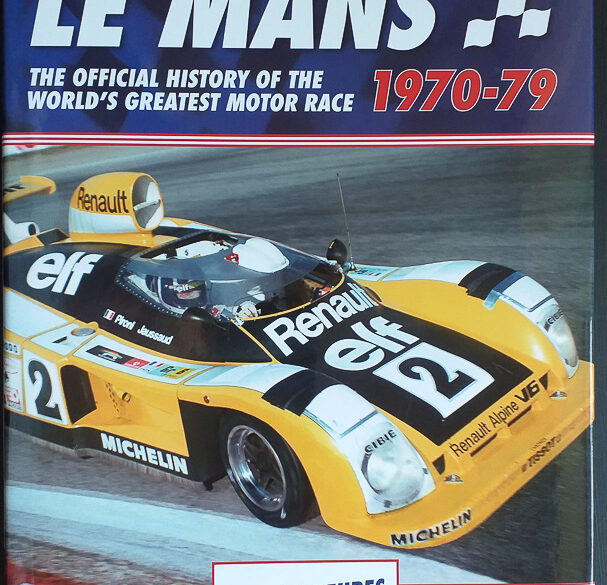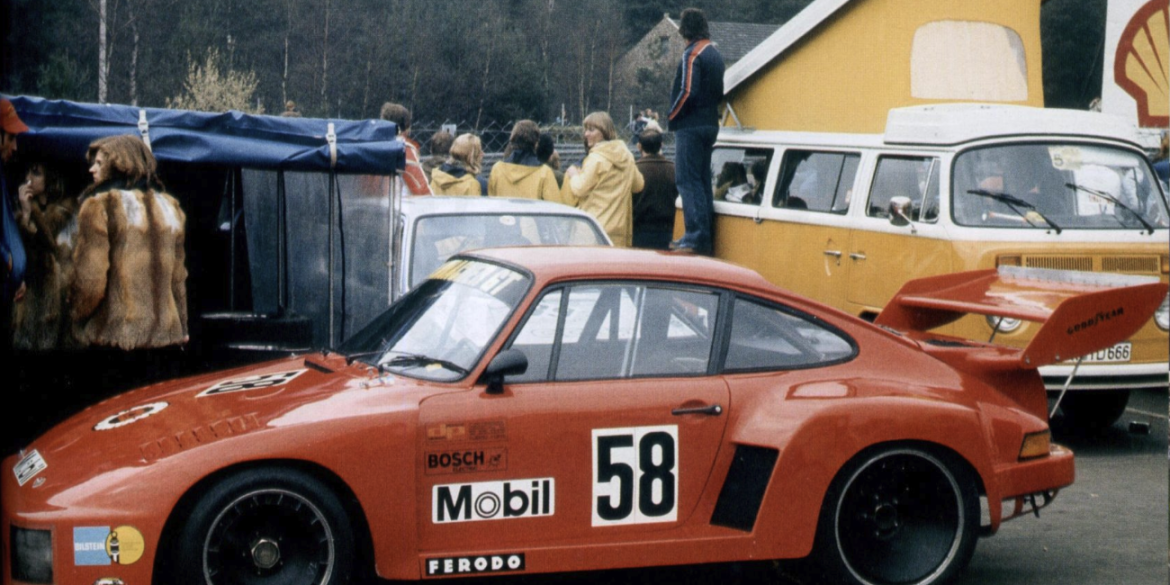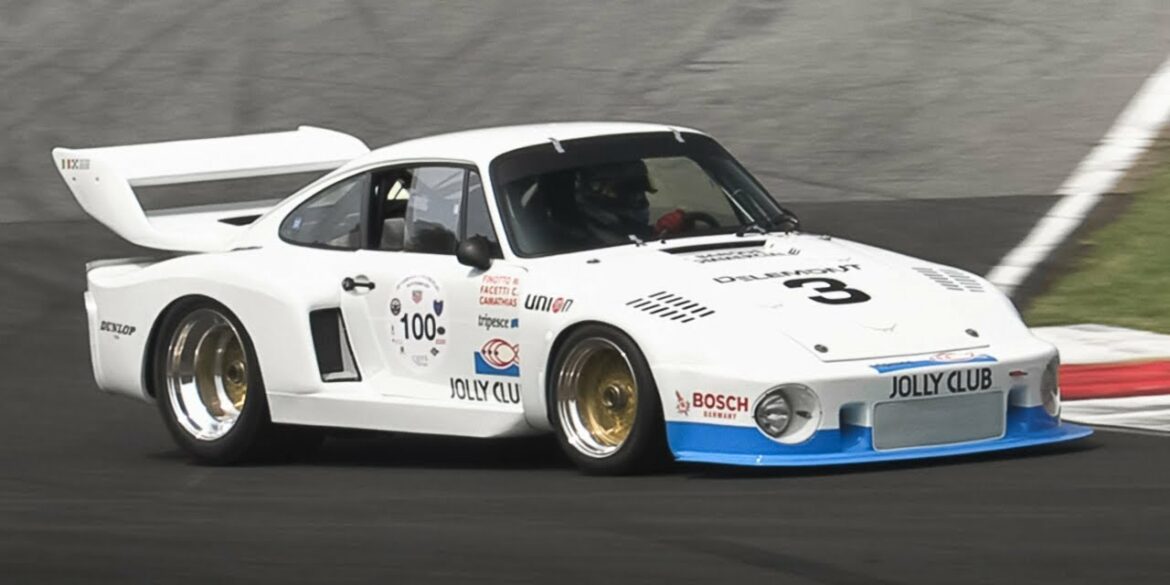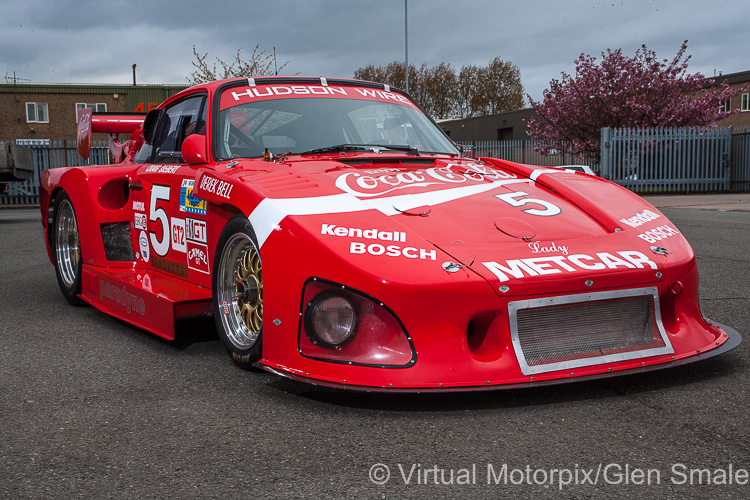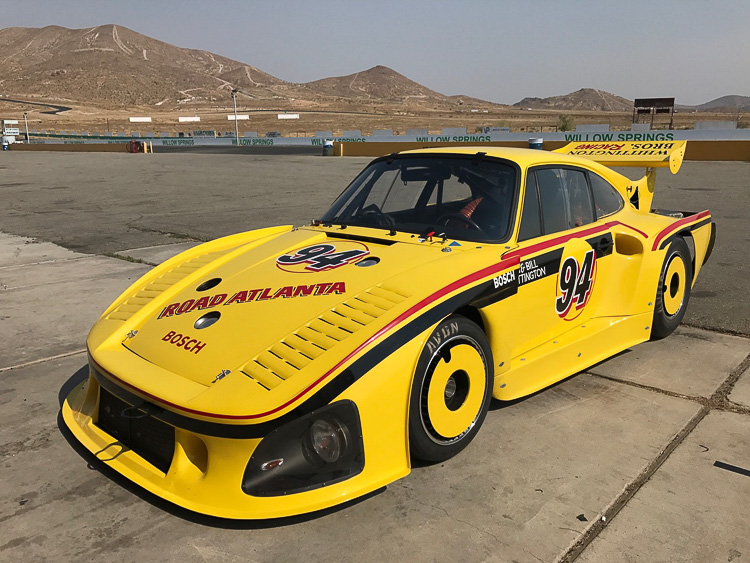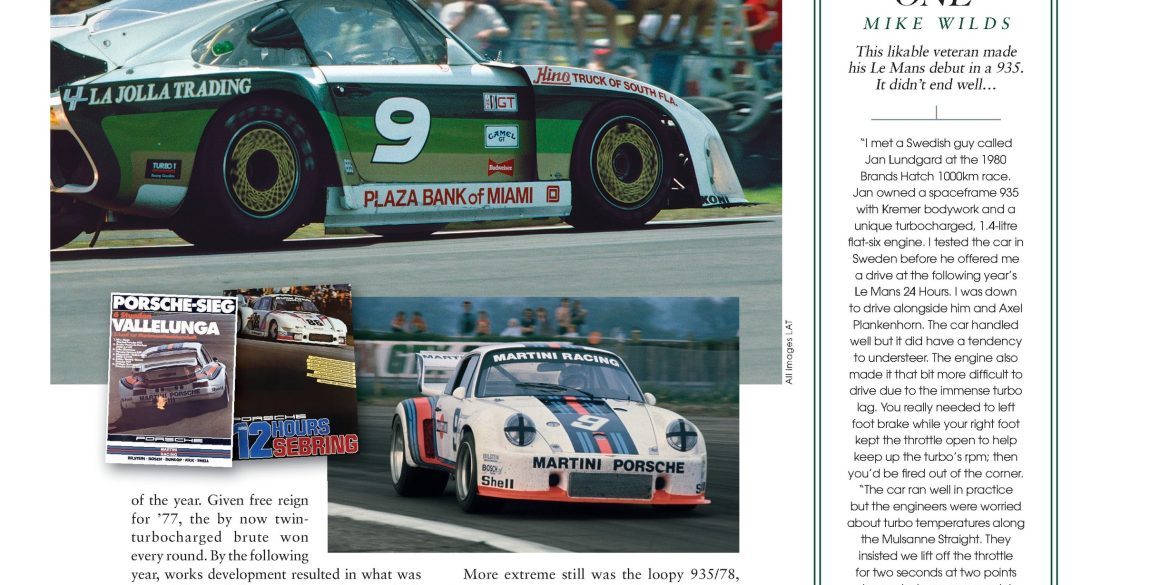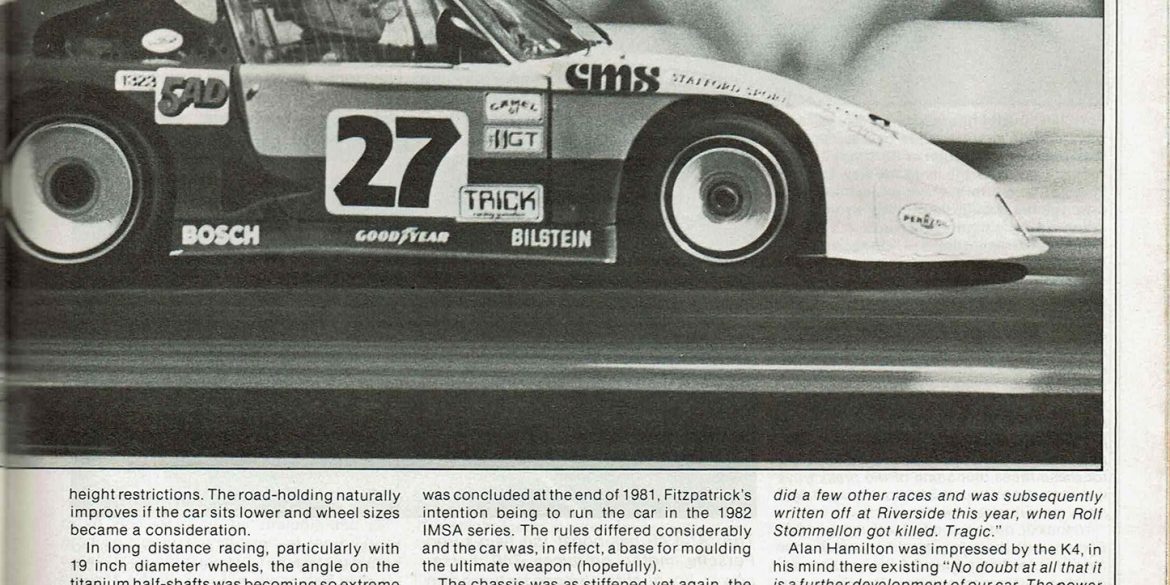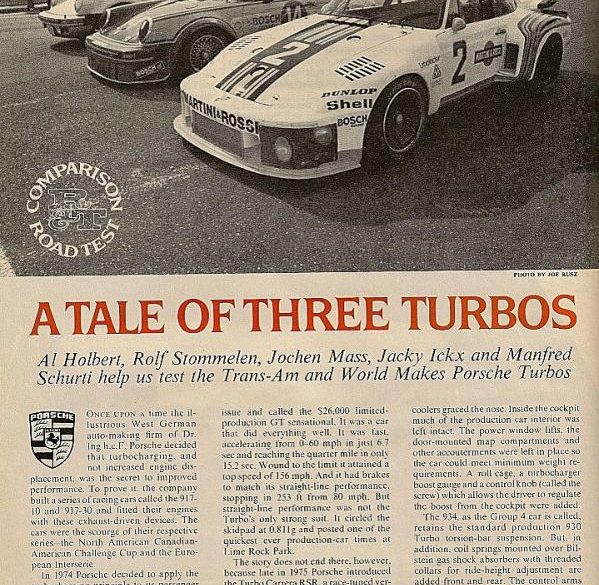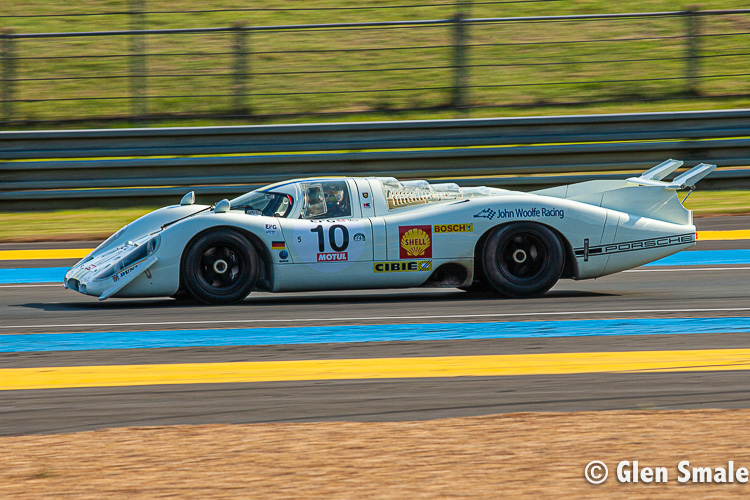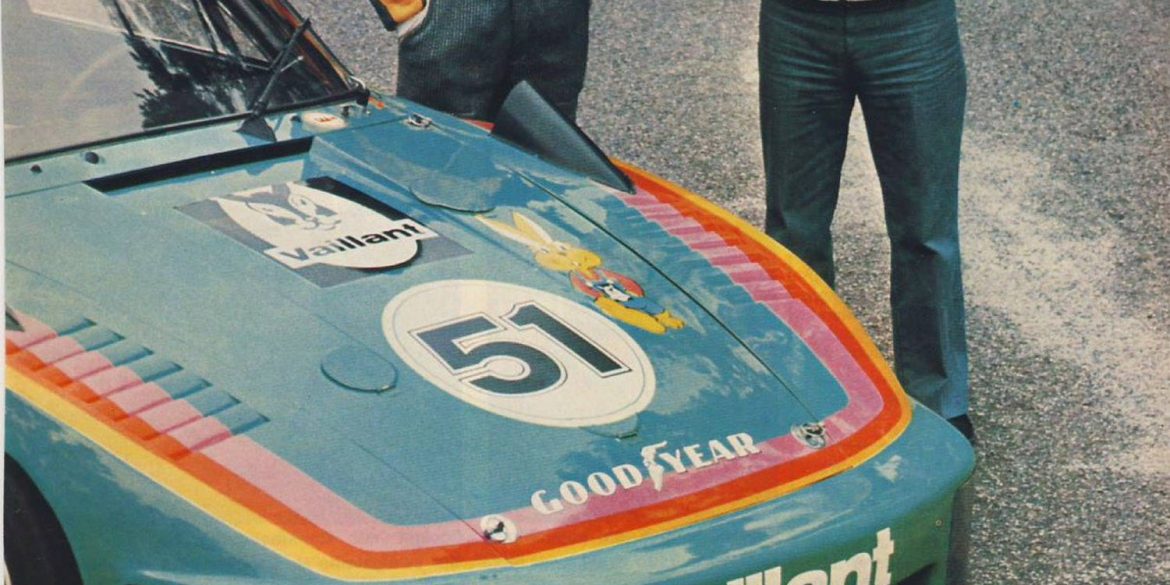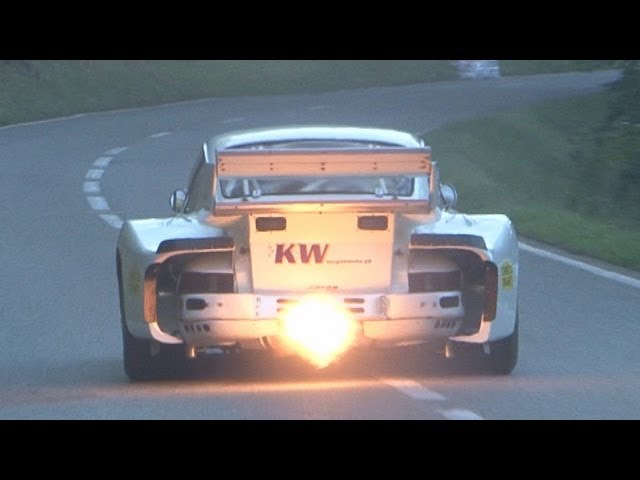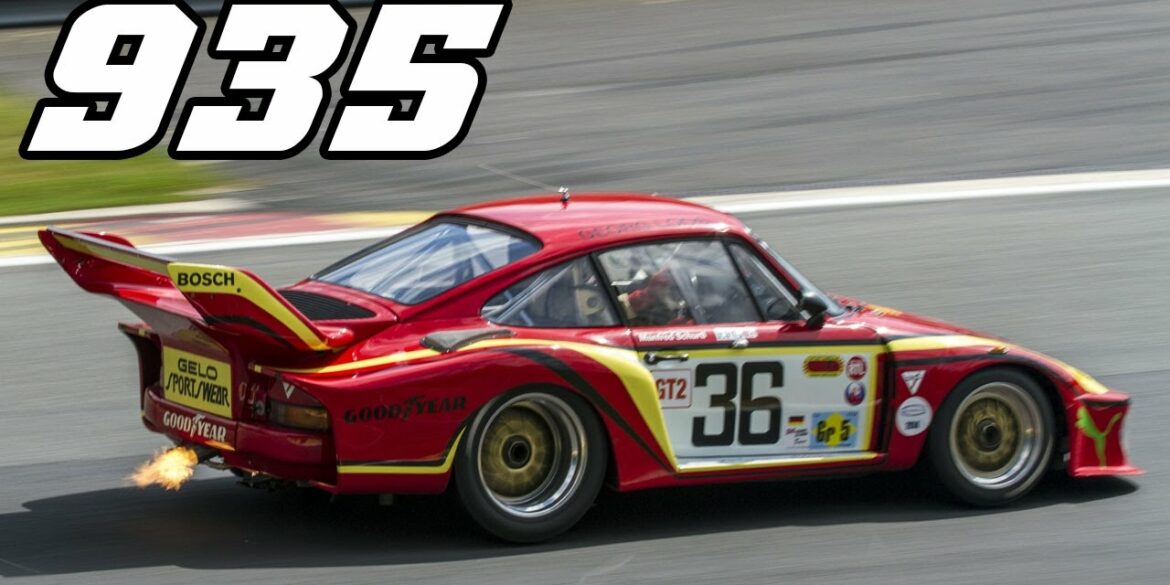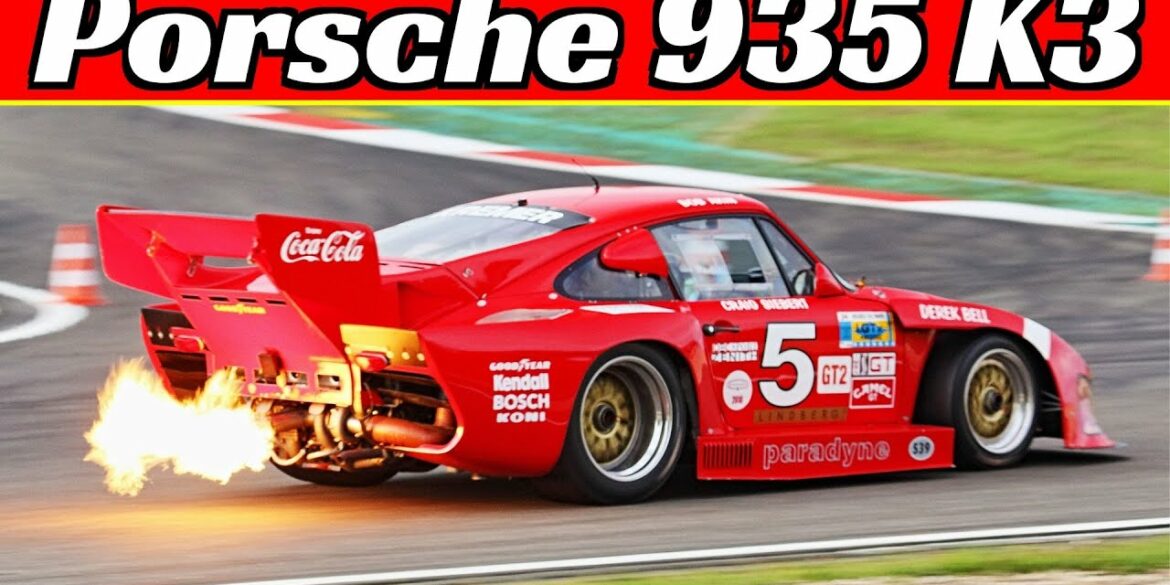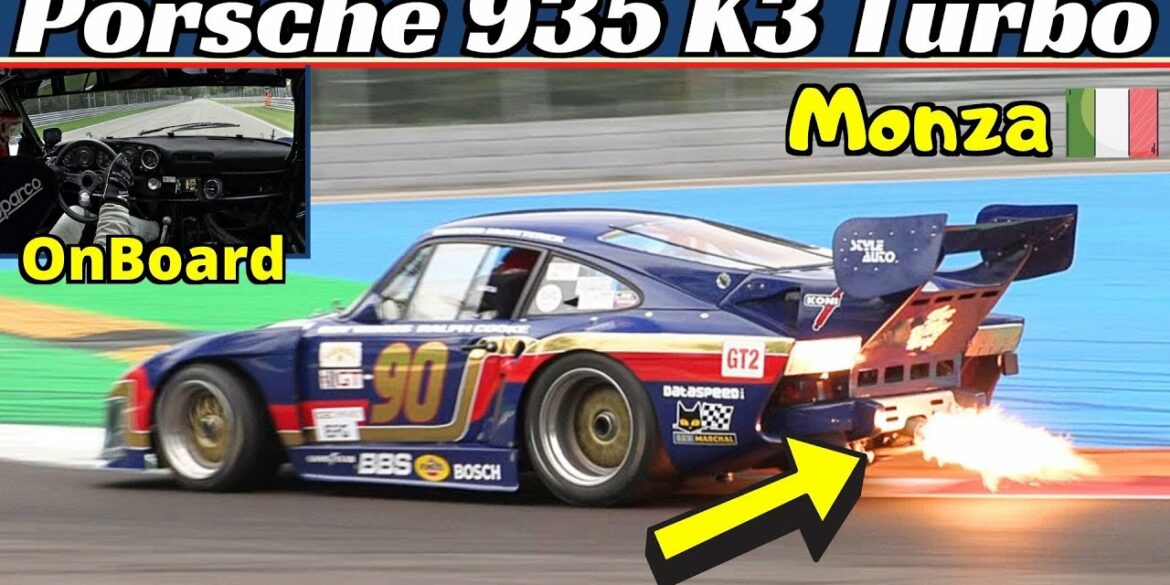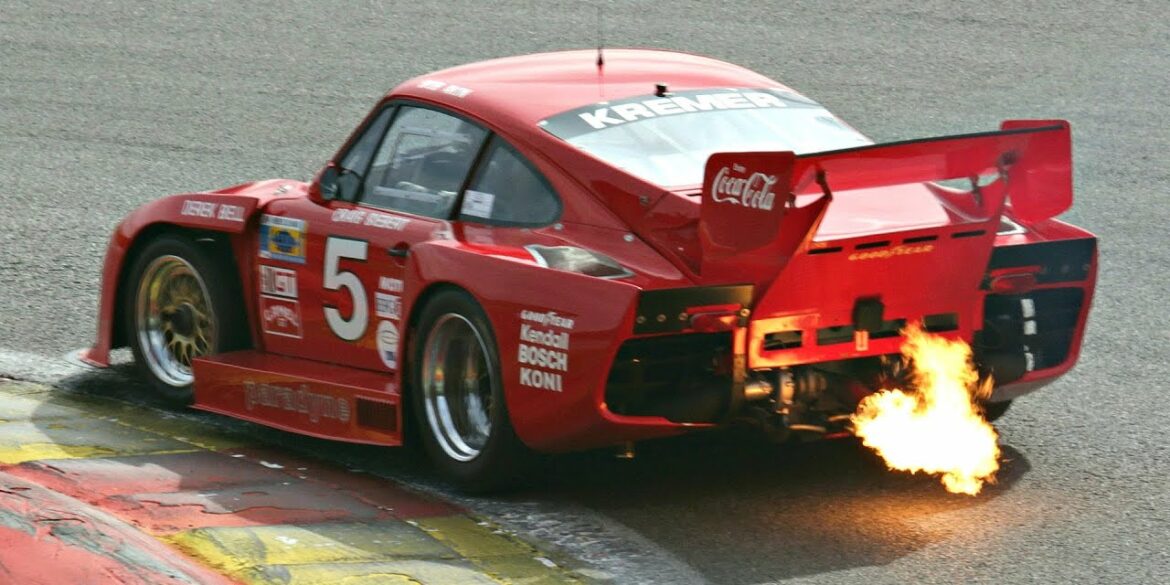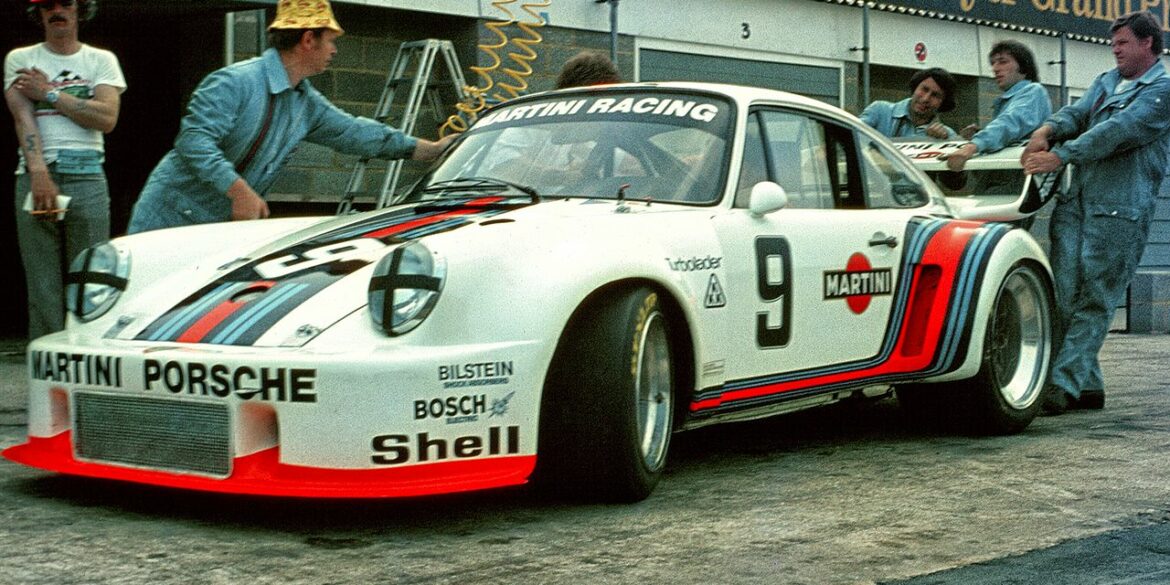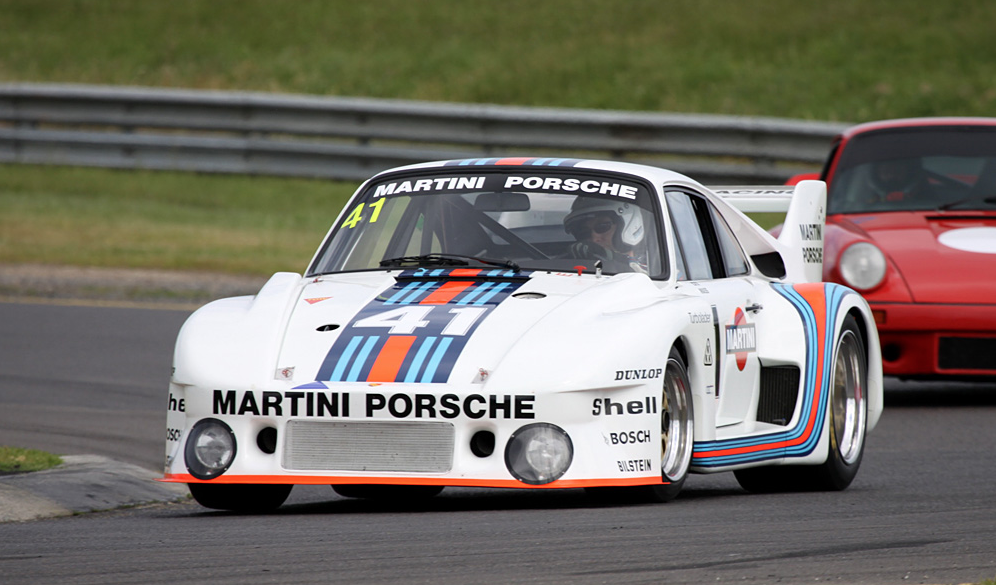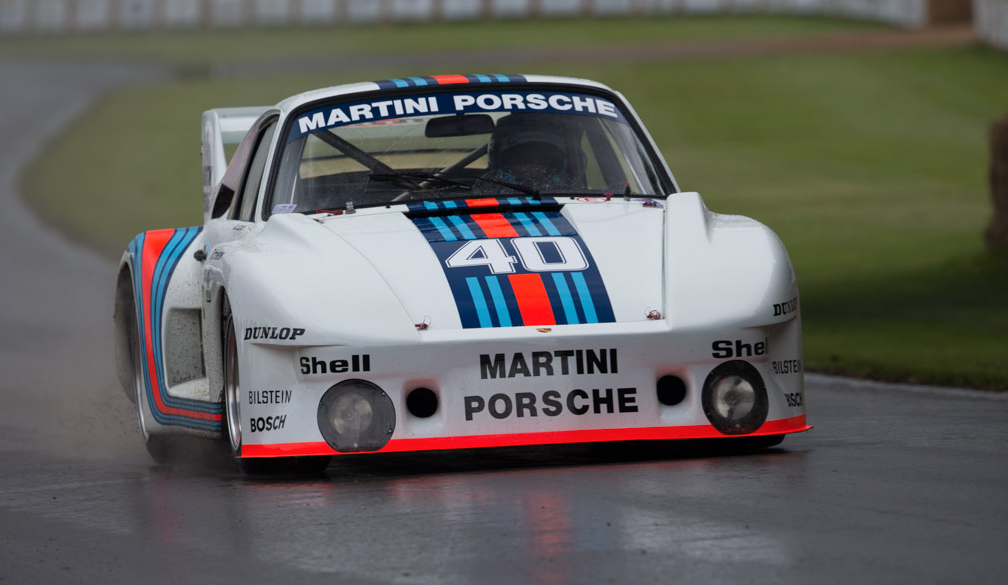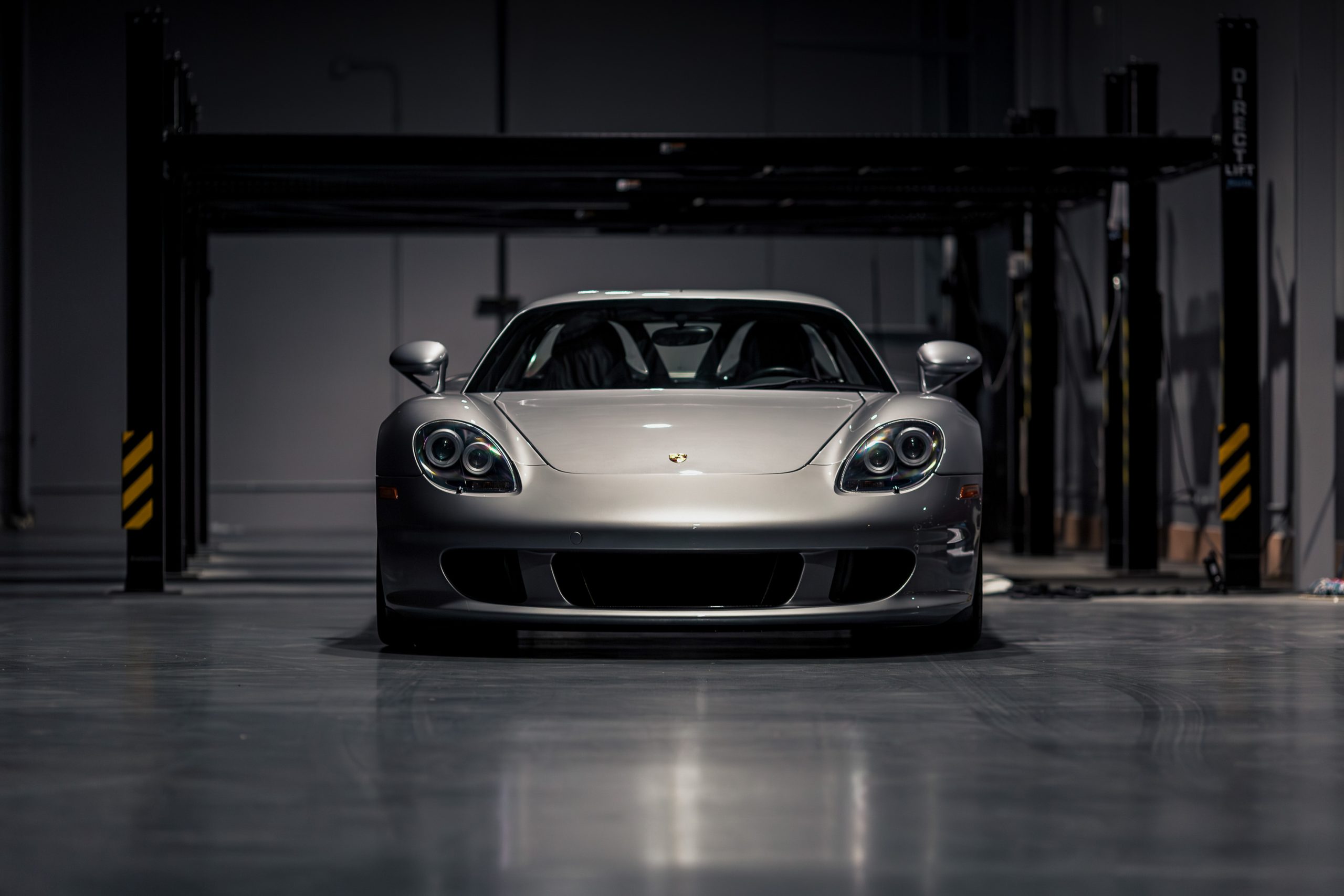The Group 4 racer based on the 911 Turbo (930) was called 934 and the Group 5 Porsche was called 935. The first version of the 935 looked similar to the 911 Carrera RSR. The first customers for 935 were Martini Racing and Kremer Racing. The Martini car was a full factory development, while Kremer made its own enhancements already before the first race. By 1977, the 935 was sold as a customer car for these series to race against cars like the BMW CSL.
The 935/77 was a result of relaxed rules and the car got a completely new suspension. The mirrors were incorporated into the front fenders and the rear window had a new angle. The 935/77 was visually very pleasing. While the 935/76 had a single turbocharger, the 2.85-litre engine of the 935/77 had two turbochargers. There was also a "baby" 935/77 built with a smaller 1.4-litre turbocharged engine to compete in the national German DRM series under 2 liter class.
The 935 ‘Baby’, based on the successful 935 Group 5 race sports car, was created in 1977, after only four months of development,, specifically for entries in the small division (up to 2000cc) of the German Sports Racing Championship. Compared to the Group 5 car, this little 935 had a six cylinder turbo engine of 370bhp, reduced to a displacement of 1.4-litres. A thorough diet helped ‘Baby’ meet the minimum weight of 750kg as dictated by the rules.
The 935/78 was the ultimate expression of the 911 factory race car before Porsche officially withdrew from motor sport. Raced under the Group 5 silhouette series, great liberties were taken with the design and the result was nicknamed ‘Moby Dick’ for its large size and huge overhangs. The 935/78 was built under Porsche's Chief Racing by Norbert Singer for high speeds at Le Mans. Due to the advanced shape of the car 227 mph or 366 km/h was possible.
Upon seeing the factory 935s and what was possible using the 930 platform, the Kremer bothers from Cologne built up their own version. Their first car contested the World Championship of Makes in 1976 and in the following year, an updated version known as the K2 was further modified. Compared to the Porsche 935, the Kremer version was much more slab sided and featured fences along the top of the rear fender to direct air to the rear wing.
In 1977 Kremer sufficiently improved the 935 to begin series production of their own version. It was the third Kremer built on Porsche's successful platform and many 935/934s were updated to reflect ideas from the brothers in Cologne. The K3 version of their 935 was a great success and won the 1979 24 Hours of Le Mans, 1980 Sebring 12 Hours outright.
Using factory 935/78 ‘Moby Dick’ plans, Kremer built their own version. In doing so they modified the body to their own design to include more downforce. Only two cars were built in K4 specification. Bob Wollek drove the first car to win the Porsche Cup in 1981. Later this car was sold to John Fitzpatrick Racing and driven by John Fitzpatrick and David Hobbs to many successes in the IMSA series.
In 1982 Bob Akin Motor Racing commissioned spectacular Porsche 935 to be built for their Le Mans effort. It was built by Chuck Gaa of Gaaco to have a higher topspeed and increased performance. Chuck Gaa fitted a Lola T600 front end to a new bespoke bonded aluminum chassis. According to the regulations, the body retained the 930 roof structure, but was entirely new from the beltline down. The standard 3.2-liter Porsche engine was used and put out 750 bhp.
Inspired by the Kremer brothers, Joest built their own version of the 935 for the 1979 season. Like the factory cars it featured intakes in the C-pillars and also had a slightly different front profile. One car was campaigned by Liqui Moly Joest Racing and won the 1980 Daytona 24 Hours outright as driven by Reinhold Jöst, Rolf Stommelen and Volkert Merl. A second car was built up for Electrodyne and raced with Momo livery in the USA.
Porsche 935/78 ‘Moby Dick’ Pictures...
Porsche 935/77 Pictures...
Porsche 935/76 Pictures...
Porsche 935/2.0 ‘Baby’ Pictures...
Porsche 935/77 Pictures...
In 1983 Porsche produced a stunning one-of road car for TAG owner Mansour Ojjeh. Based on a 934 chassis, it was designed to mimic the potent 935 racecars and subsequently became the one of the first slantnoses. Both the front and rear sections were made similar to the potent 935 race car which dominated the Group 5 Championship. This silhouette series allowed radical modifications which contributed to the repositioned nose, ultra-wdie flares and extended rear bodywork.
All four of the Dick Barbour Racing Porsche 935s line up in the pits ahead of the 1979 Le Mans race, each with the Stars and Stripes draped over the rear wing. From left to right: #73 935/77 (934½) – John Hotchkiss, Bob Kirby and Bob Harmon; #72 935/77 –...
The #8 Kremer K3 Porsche 935 entered by Dick Barbour and driven by John Fitzpatrick, in the pit lane ahead of the 1980 Norisring race. The author, Martin Raffauf, is at the car’s right front wheel The Race for the Pork Cutlets… The end of June 1980 was a busy...
A warm up lap at Le Mans Classic 2012, Emmanuel Collard driving the Porsche 935 Moby Dick of Manfred Freisinger....
Porsche’s 1981 Daytona 24-Hour winning poster A lot of people have asked me over the years, what is it like to plan, prepare for and run a 24-hour sports car race. It has changed somewhat over the years from the days of the Porsche 935 at the 1981 Daytona 24...
The #6 Barbour, Stommelen, Mears car, a 935-78 (935-77A), enters the Sebring front straight. While this was the fastest car there, it was delayed for some laps with a brake issue and finished fourth The IMSA season in the 1970s always started with the two toughest races on the calendar,...
Bob Akin’s 935, one of the major protagonists in the 1983 Sebring 12 Hour race. It was driven by Bob Akin, John O’Steen and Dale Whittington and finished second overall. (©Brian Cleary) The 1983 Sebring 12 Hour was an epic event. Back then the race was run on the ‘old...
Martin Raffauf and Chris Hill look under the car with the ACO inspectors. Mechanic Jeff Lateer looks on with the camera. Tech inspection went very well for the 935 as we had Annie Verney with us to “discuss” any issues with the ACO as we proceeded. The Garretson Developments Sports...
The #91 Porsche 911 RSR driven by Richard Lietz and Frederic Makowiecki rounds Malmedy during the WEC 6 Hours of Spa-Francorchamps on 6 May 2017 Sixty-six years ago, on 24 June 1951, the first Porsche was pushed tentatively onto the starting grid of the 1951 Le Mans 24 Hour race....
Official Daytona ’85 poster By 1981 at the earliest, and for sure by the 1983 season of sports car racing, it had become clear to most that the Porsche 935 was reaching the end of its useful racing life. While it had been a great car, it just could not...
Porsche 935 chassis no. 009 00030, the Old Warhorse speeds up the hill at the 2015 Goodwood Festival of Speed with Brian Redman at the helm This is a story of the incredible career of Porsche 935 009 00030, one of the most amazing race cars ever, or as someone...
Without any doubt, one of the most exciting classes or motor racing during the 1970s was the GT class, which included the Group 4 and Group 5 or ‘Silhouette’ classes. It wasn’t just the cars that were exciting, but the gallant combatants had character and guts, making this one of...
Daytona 24 Hours, 31 January/1 February 1981: Bob Garretson, Bobby Rahal and Brian Redman driving the #9 Porsche 935 (chassis #009 00030) would go on to win the race by 13 laps, having started from 16th on the grid The Flying Tigers strike again! Being the best on the planet in...
Side view of the ANDIAL 935-L ‘Moby Dick’ in the Riverside pit lane 1982 The ANDIAL 935-L ‘Moby Dick’ race car was a one-off creation that raced between 1982-1985. Without any help from the factory, the small team of dedicated professionals at ANDIAL with significant help from Glen Blakely, this...
The 1977 #40 Martini Porsche 935/2.0 Baby (chassis #935 2 001) photographed at the Porsche Museum, Stuttgart, Germany in May 2017 Ernst Fuhrmann’s requirement to develop a significantly updated GT race car in 1977, would present a number of challenges for the Porsche race department. Just to make things interesting,...
This is the start/finish line and main grandstand Thursday’s qualifying at Daytona was a tense affair, with the top spot being snatched in the prototype and GTLM classes by the smallest of margins, in the closing stages of the session. Martin has sent a batch of interesting shots and we...
#5 Porsche 908/3 – Juan Fernandez/Francesco Torredemer/Eugenio Baturone – NRF The 1972 season broke, ushering in with it a new era of racing. The Porsche 917 had reigned supreme for two years, but the race authorities (read FIA) had had their fill of Porsche interpreting the rules their way, and...
Le Mans 24 Hour, 10/11 June 1978: The Porsche 935/78 ‘Moby Dick’ pulls away at the start of the race – this car was third fastest in qualifying Dick Barbour went to Le Mans as an entrant for the first time in 1978. He entered two Porsche 935s at the...
The Porsche 928 was launched in 1978 – this is a 1980 model The Porsche company, now 30 years old in 1978, had moved from being the small-scale manufacturing company to being a significant player, albeit in a niche market. The front-engined transaxle 924 model, introduced in 1976, was now...
Porsche 935-78 Moby Dick (chassis 935/78.006 ), photographed at the Porsche Warehouse in May 2017 Group 5 rules offered manufacturers a great deal of freedom to modify their cars in the Silhouette class. At Porsche, Norbert Singer pushed the rules to the limit, and gave us the Porsche 935/78 Moby...
Porsche 930 to 935: The Turbo Porsches – by John Starkey © Veloce Publishing Ltd Much has been written about Porsche’s racing exploits over the years, but there is perhaps one model that has served, more than any other, as the pillar of the company’s achievements. Prototypes have come and...
12 Hours of Sebring, 18 March 1978: The #9 Dick Barbour Racing Porsche 935 driven by Brian Redman, Charles Mendez and Bob Garretson In the early to mid-1970’s I had been working part time (race weekends) as an IMSA tech inspector at some of the races, mainly the ones that...
A great many of Derek Bell’s racing achievements were achieved while behind the wheel of a Porsche racing car and for this reason, it was perhaps inevitable that Derek Bell – All my Porsche races, would one day be committed to print, highlighting his extraordinarily successful career. Contrary to what...
The Gerry Judah sculpture at the 2018 Goodwood Festival of Speed featured six Porsche cars mounted on a 52-metre-high star-shaped structure. This event celebrated both the 25th Festival of Speed as well as Porsche’s 70th anniversary I have always wondered, what the Goodwood FOS (Festival of Speed) was all about....
Le Mans 24 Hours, 9/10 June 1979: Its a tense time as the lead car, the #41 Numero Reserve Kremer Porsche 935 K3 driven by brothers Bill and Don Whittington, and Klaus Ludwig calls into the pits. Winning the Le Mans 24 Hour was without doubt the highlight of the...
Brian Redman – Daring Drivers, Deadly Tracks © EVRO Publishing Brian Redman is about as down-to-earth as they come, which for a top-flite racing driver, is not an attribute common to all who ply their trade in this field. I have had the pleasure of interviewing Brian on twelve occasions...
Porsche’s sixth edition of the by now much-anticipated Rennsport Reunion kicked off on Wednesday 26 September 2018. You could have expected that this would be a really big one for Porsche, with it being their 70th anniversary year, but the Stuttgart manufacturer really pushed the boat out with this one....
It’s hard to know where to begin when writing a report on Porsche Rennsport Reunion VI. It was both an emotional and a sensory overload! A reunion with people not seen for a while, and the historical impact of all the rare cars. This was the sixth iteration put on...
No Subscription? You’re missing out Get immediate ad-free access to all our premium content. Get Started Already a Member? Sign in to your account here....
Lot #196, the 1985 Porsche 959 Paris-Dakar, outstripped its pre-sale estimate at RM Sotheby’s Porsche 70th Anniversary Auction at the Porsche Experience Centre Atlanta. With a pre-sale estimate of between $3.0m-3.4m, the 959 sold for a final $5,945,000, almost doubling its estimate. This was just one of the vehicles at...
As we wave goodbye to 2018 and usher in a brand-new year, we look back on the top ten favourites that we were privileged to publish in the last twelve months. We have decided to bring you our top 10 from 2018 (in chronological order) to show you, our valued...
Le Mans 24 Hours, 23-24 June 1951: In the foreground of the workshop at Teloché is the #46 Porsche 356 SL driven by Edmond Mouche and Auguste Veuillet, while in the background is the #47 Porsche 356 SL which was damaged in practice by Rudolph Sauerwein Porsche has been represented...
Le Mans 24 Hours, 31 May-1 June 1986: Start of the race – Porsches dominate the lead group In Part 1, Stories from Le Mans – with a Porsche flavour, our intrepid scribbler who hails from that beautiful part of South Africa, the Western Cape, shares with us some hilarious...
Norbert Singer, 24 Hours of Le Mans, 1996 Norbert Singer must rank as one of the most successful race engineers in Porsche’s long and glittering motorsport history. Porsche Road & Race spoke to him about his four-decade career with Porsche, the race cars he helped develop and the 24 Hours...
It has been one year short of four decades since this 1980 Porsche 935 K3 was fabricated by Kremer Racing in Germany. Today this race car is every bit the race car it was intended to be back in the day – fearsome, awesome and very capable. It is powered...
Toine Hezemans in his Brussels home, 2015 One of the Netherlands’ most successful racers, Toine Hezemans is part of a motorsport dynasty that began with his father who raced Porsches in the 1950s. This family tradition continued with Toine who began racing 911s in the late ‘60s, but after his...
Le Mans 24 Hour, 13-14 June 2015: Lined up prior to the formation lap are (from L-R) – the #18 Porsche 919 Hybrid driven by Marc Lieb/Romain Dumas/Neel Jani (finished 5th); #17 Porsche 919 Hybrid driven by Timo Bernhard/Brendon Hartley/Mark Webber (finished 2nd); #19 Porsche 919 Hybrid driven by Earl...
Le Mans 24 Hours, 13-14 June 1981: Team photo following a successful technical inspection A lack of testing proved to be the downfall of the Porsche-Lola T600 in the 49th running of the Le Mans 24 Hours in 1981. But let us not get ahead of ourselves… The 1981 season...
John Fitzpatrick Group C Porsches – The Definitive History, Mark Cole. © Porter Press There seem to be a number of books entering the market right now on Porsche’s motor racing history. This is not a bad thing, because there is so much to explore about these fantastic and iconic...
It may have taken place just over a week ago, but the Rolex Monterey Motorsports Reunion 2019 was another top-drawer event that should be celebrated for the manner in which it has lifted the profile of yesterday’s great race cars. The growth in historic race reunions, revivals, festivals and the...
The Complete Book of Porsche 911 – Every Model Since 1964 by Randy Leffingwell: © Quarto Publishing The name, Randy Leffingwell, will be familiar to most Porsche enthusiasts. Leffingwell worked in Kansas City, Chicago and for the LA Times as a photographer and writer for more than two decades. In...
Kremer Porsche 935 K3 – chassis #930 890 0021 The Porsche 935 was the Stuttgart manufacturer’s answer to the FIA’s Group 5 class regulations, making it eligible for the World Championship of Makes. The first Porsche car in this so-called ‘Silhouette’ series, was introduced for the start of the 1976...
The cars come around for the start – Fitzpatrick (left) and Moretti (right) lead the pack By the time the Dick Barbour Racing team arrived in Portland for the Rose Cup IMSA race in August of 1980, we were in good spirits. The week before at the Sears Point IMSA...
A huge banner adorns the side of this high bay warehouse in Werk 2, announcing the 25th anniversary exhibition of Exclusive from 1st March to 1st May 2011 Rolf Sprenger was a versatile engineer whose Porsche career was founded almost entirely on customer service. “If I want a trailer (caravan)...
1981 Porsche Kremer 935 K4 – chassis #K4-01 In the mid-1970s, Porsche developed the 911 for racing, and in the process, it created the all-conquering 935. In 1978, Norbert Singer was responsible for building the ultimate factory 935, the Moby Dick 935/78, and although this race car had a very...
Le Mans: The Official History 1970–79 by Quentin Spurring © Virtual Motorpix/Glen Smale This edition of Quentin Spurring’s fabulous series covers the 1970s in his well-known and valuable decade-by-decade history of the Le Mans 24 Hours endurance race. The decade from 1970 to 1979, certainly saw some of the most...
Restored Porsche 935/76 Group 5 Car In this video, he had the lucky chance to record both external and internal sounds and video of a restored 1976 Porsche 935/76 Group 5 race car. ...
Kremer Porsche 935 K3/80 (chassis #0013) In the mid-70s, Porsche developed the 935 model, a race car homologated on the 930 road car and aimed at the Group 5 ‘silhouette’ series created by the FIA for the 1976 season. As the records will show, the 935 was a formidable race...
1979 Porsche 935 chassis #009 0004 – Willow Springs International Raceway © Robert Graham Junior The phone rang, it was my old friend Carlos de Quesada. “I’ve just bought a 935 to restore,” he told me. “Great,” I replied, “which one?” “#009 0004,” announced Carlos. Chassis #009 0004? I had...
Yes, you might think the title is a mis- print, but it is not. HSR (Historic Sportscar Racing) put on their now annual Historic 24-hour race for vintage cars at Daytona International Speedway from 4-8 November. This event is run in a similar fashion to the Le Mans 24 historic...
Porsche 935 JLP-4 at the Goodwood Festival of Speed, 2014 JLP-4 was the final race car in the line of Porsche 935 specials built for the John Paul father and son team. Using this final ‘weapon’, the Pauls notched up several outright victories in IMSA races and, in combination with...
930...
Le Mans 24 Hours, 14-15 June 1969: On the final lap, the No. 64 Porsche 908 LH of Hans Herrmann/Gérard Larrousse swapped places with the No. 6 Ford GT40 of Jacky Ickx/Jackie Oliver as many as five times. The two cars were so evenly matched that what the Ford lacked...
Porsche Special at Swiss Hillclimb In this video, he had the lucky chance to record both external and internal sounds and video of a restored 1976 Porsche 935/76 Group 5 race car. ...
Porsche 935 On Track ...
Porsche 935 k3 Kremer Turbo On Track ...
Porsche 935 Turbo Monster + Onboard I had the pleasure of filming this amazing Porsche 935 k3 Kremer Gr.5 during the 2020 Monza Historic. We have to thank the pilot Jean-Marc Merlin and all the guys from Team Equipe Europe for being very kind to us and let to install...
Porsche 935 Turbo Kremer Video I recently had the opportunity to film the mighty 1979 Porsche 935 Turbo Kremer K3 at Monza circuit. This beast is powered by a fire-breathing 3.2 litre twin turbo flat-six engine which can deliver up to 800hp. Video shows first the car starting and warming...
Porsche 935 K3Turbo At Nürburgring In 1979 a 935 K3 was the overall winner of the 24h of Le Mans. A “normal” 935 came second and a 935 K2 came third overall. So it was an impressive car even back then. What are the differences between a K3 and a...
No Subscription? You’re missing out Get immediate ad-free access to all our premium content. Get Started Already a Member? Sign in to your account here....
Porsche 935/77 Specifications This is the spec sheet for the Porsche 935/77. Note there was also a 1.4 Liter “Baby” Porsche 935 and those specs can be found here. No Subscription? You’re missing out Get immediate ad-free access to all our premium content. Get Started Already a Member? Sign in to...
Porsche 935/77 “Baby” Specifications No Subscription? You’re missing out Get immediate ad-free access to all our premium content. Get Started Already a Member? Sign in to your account here....


